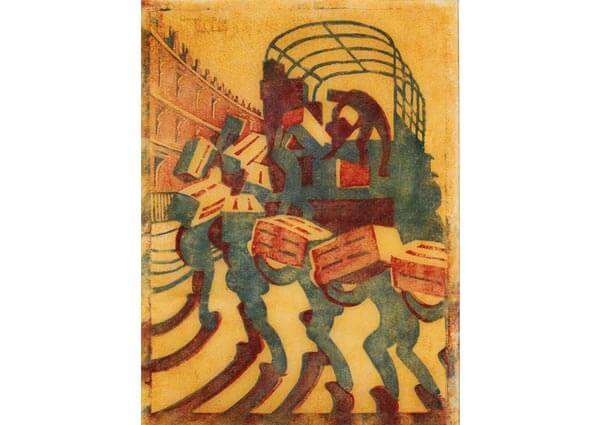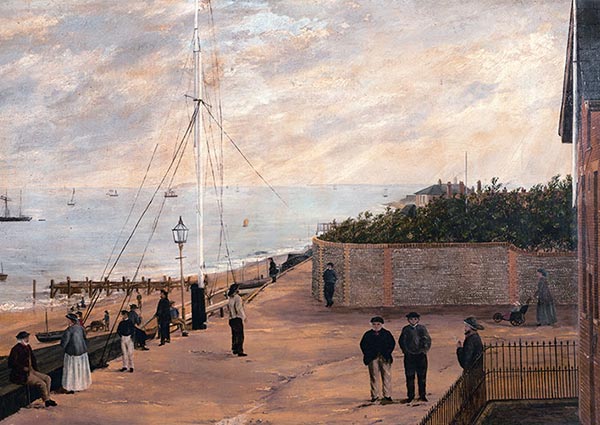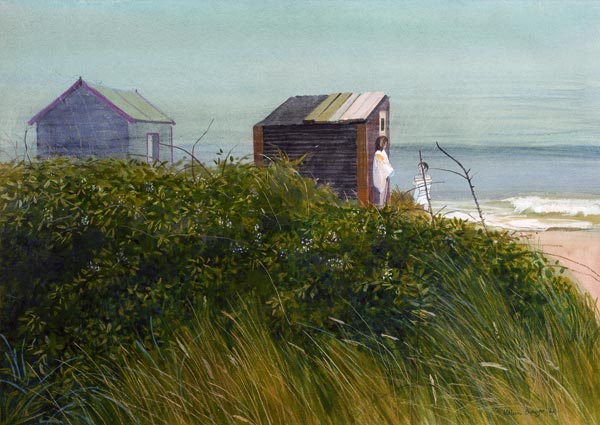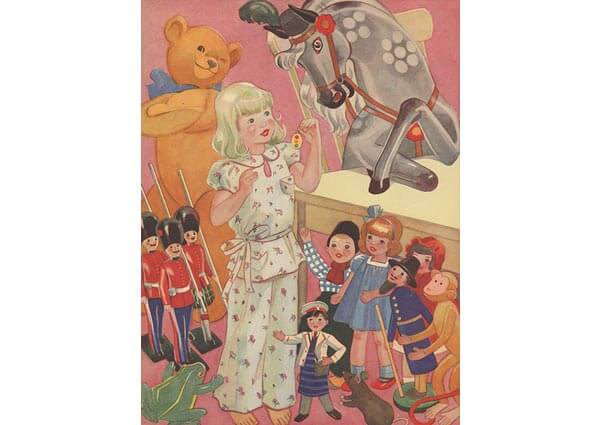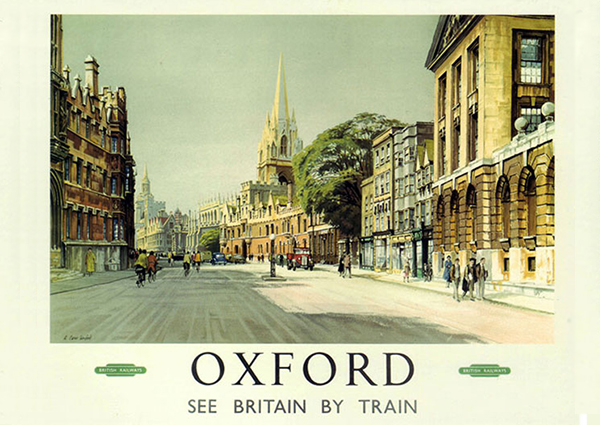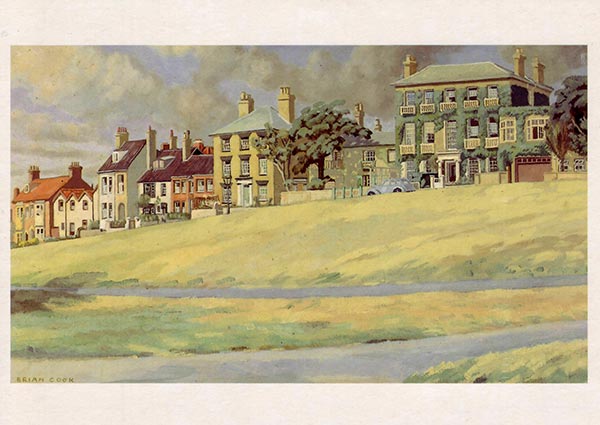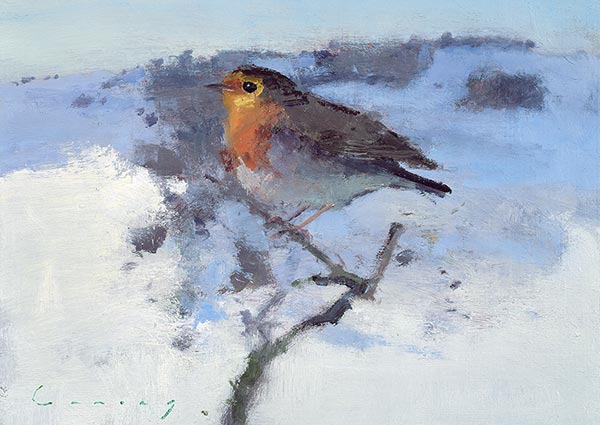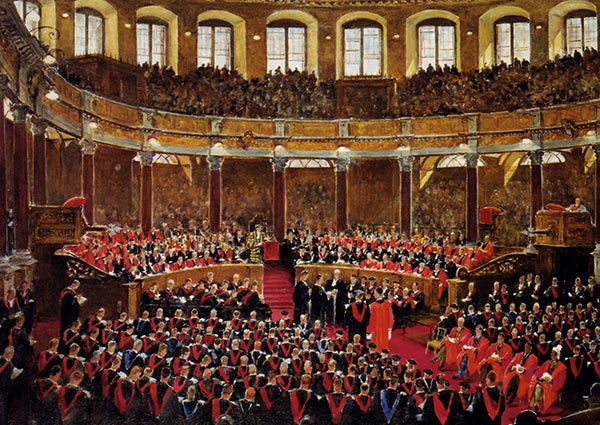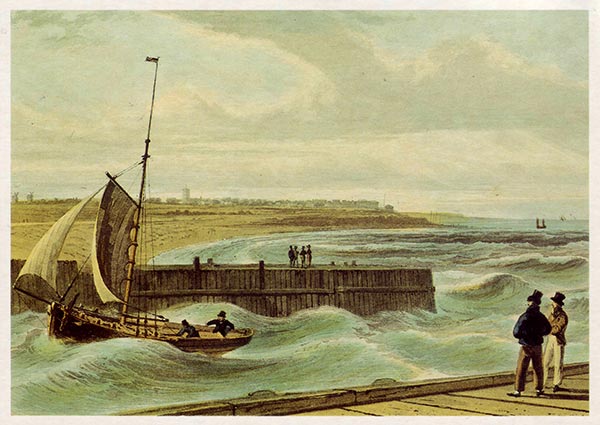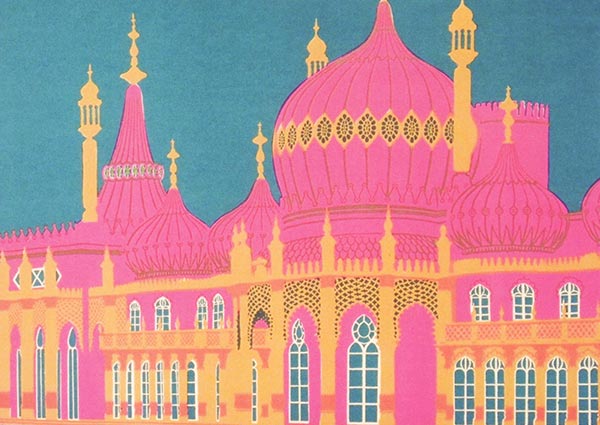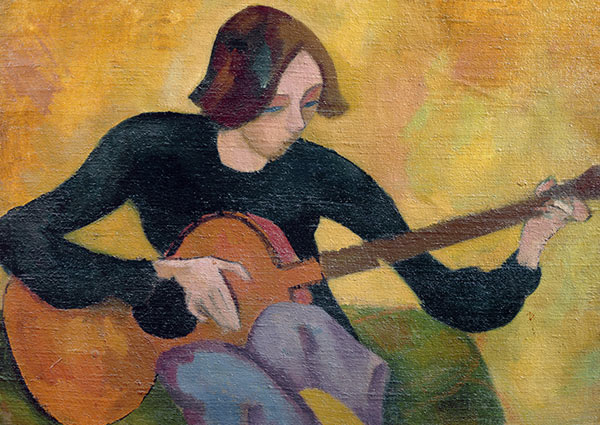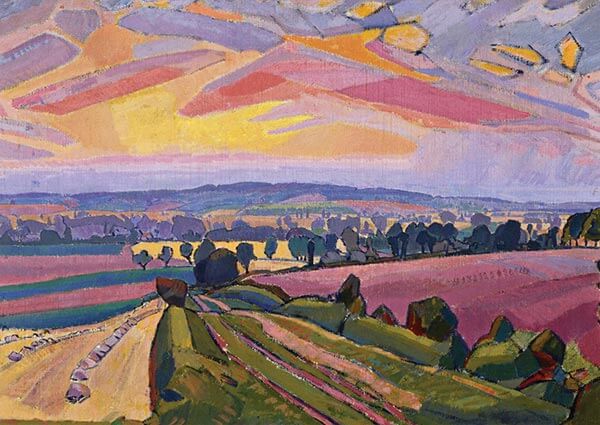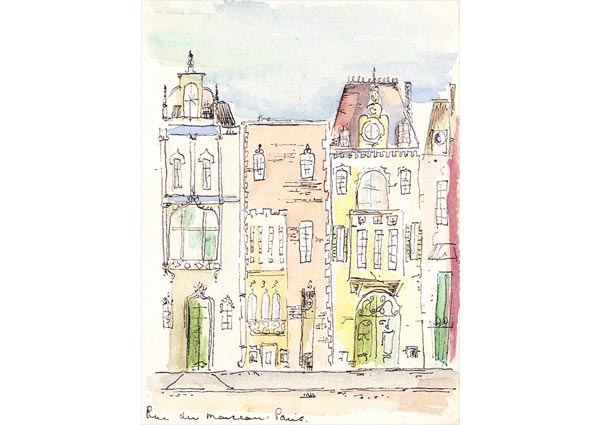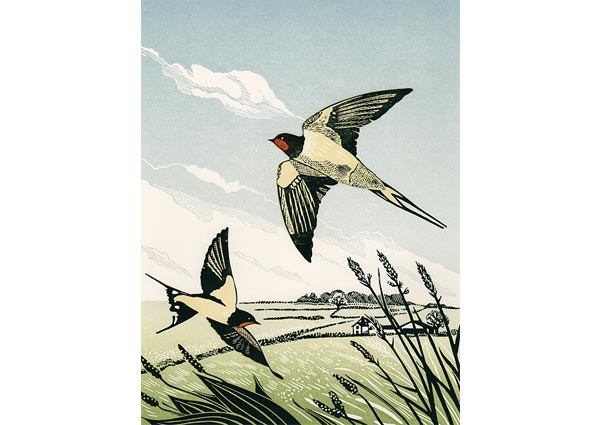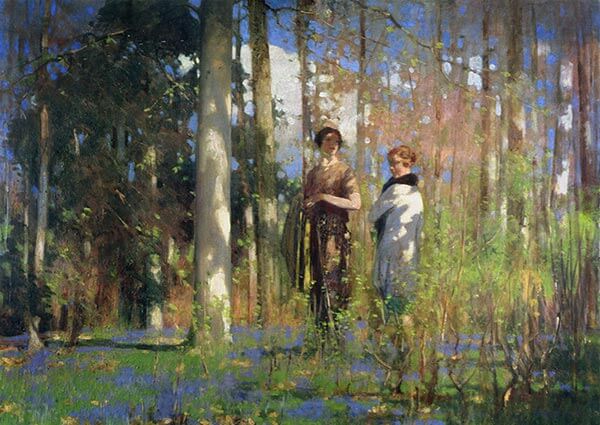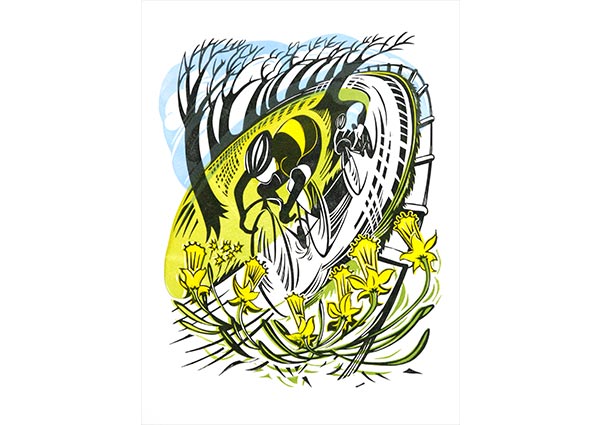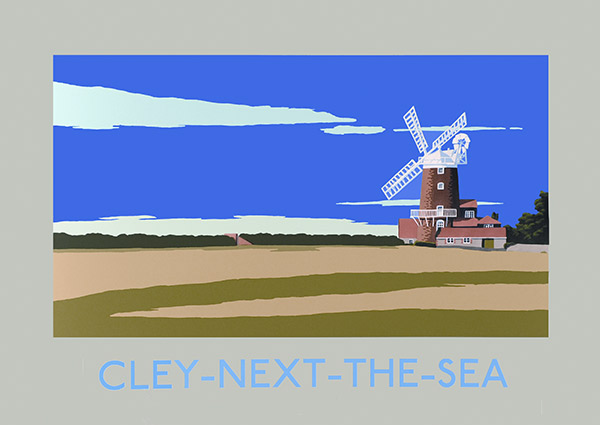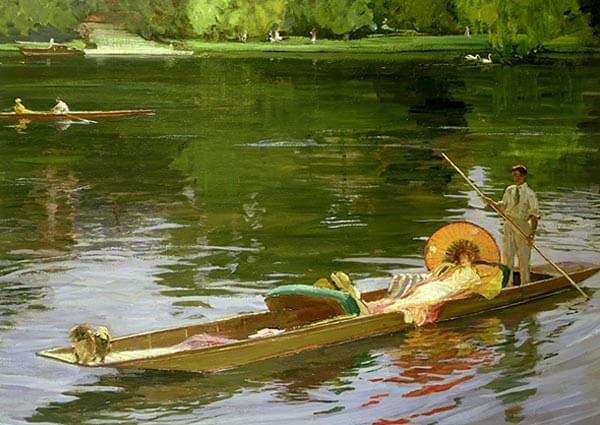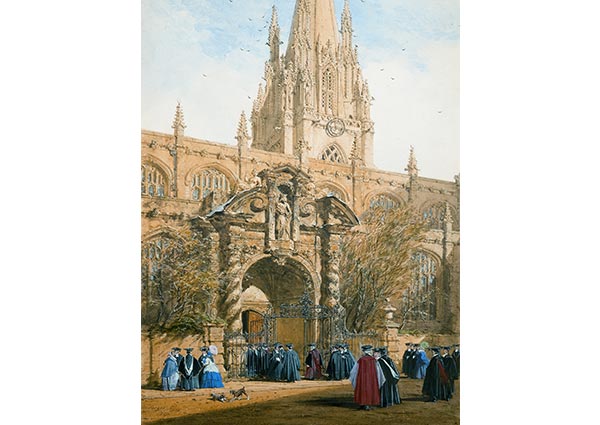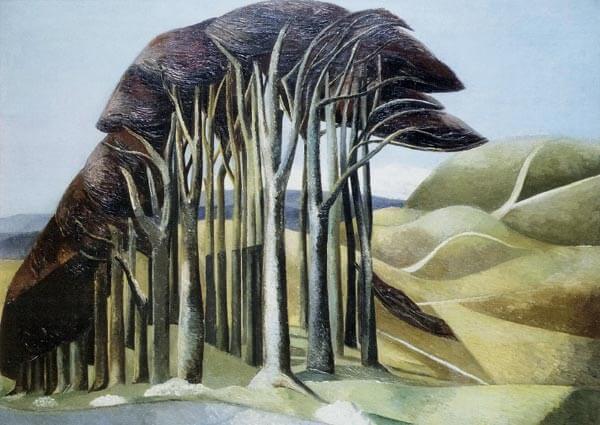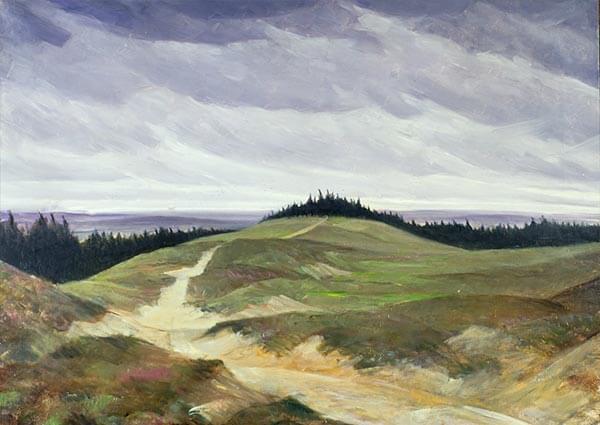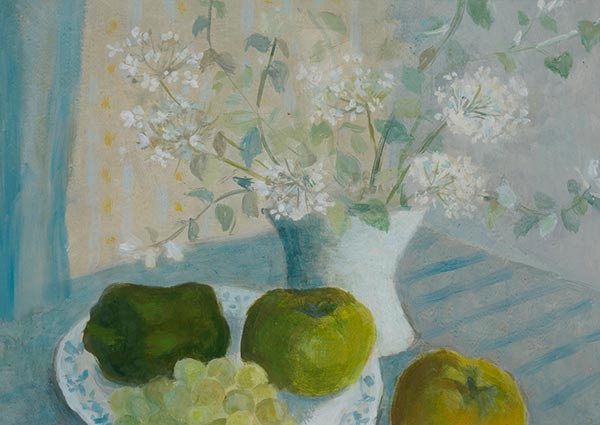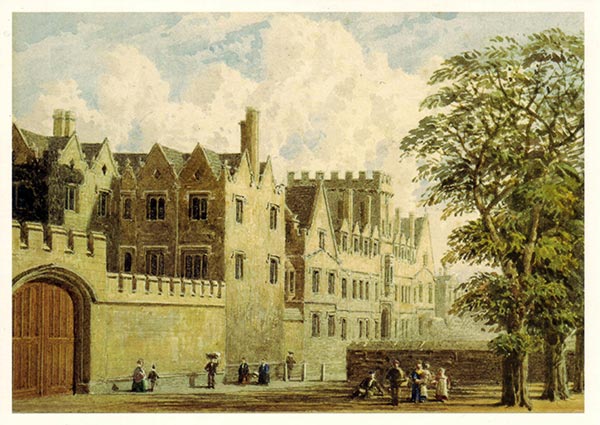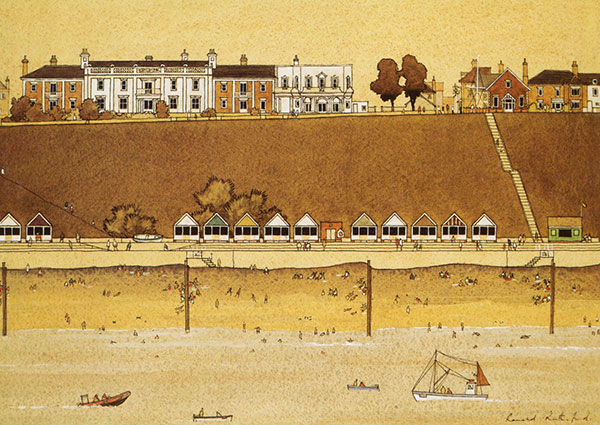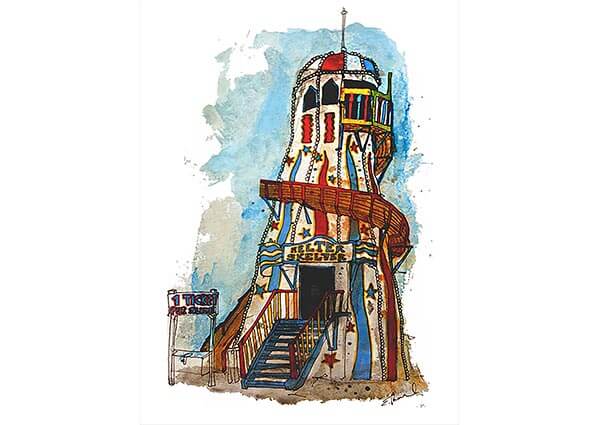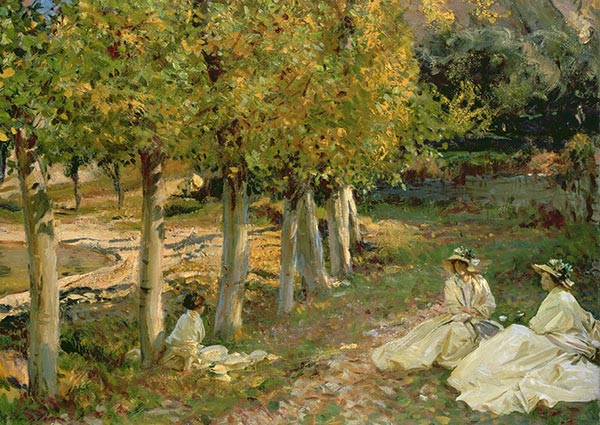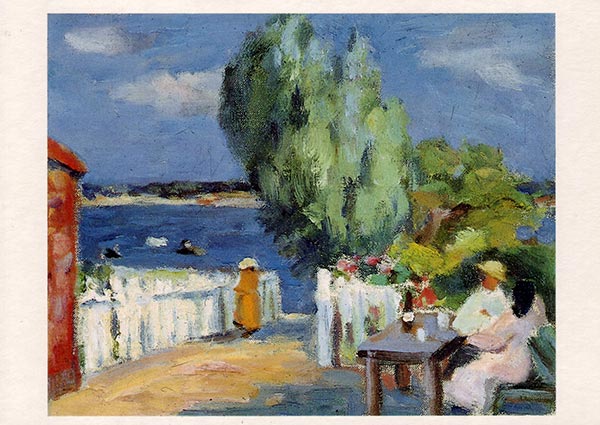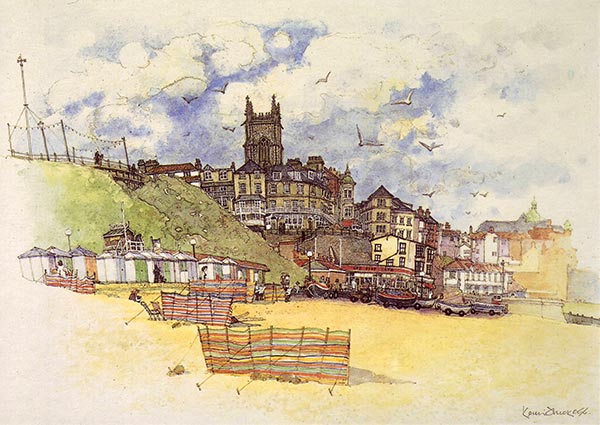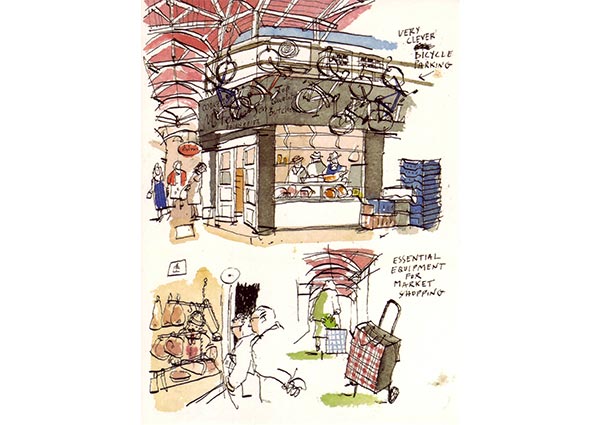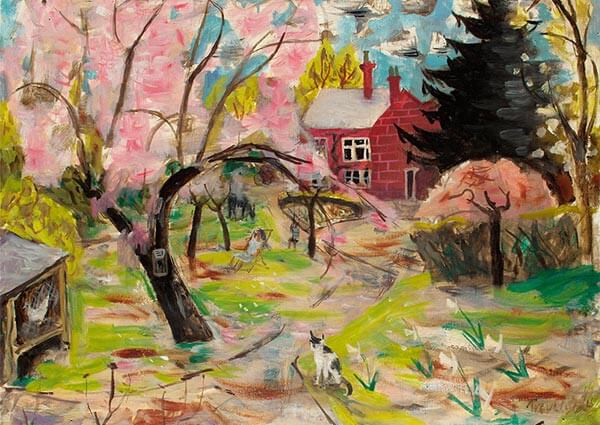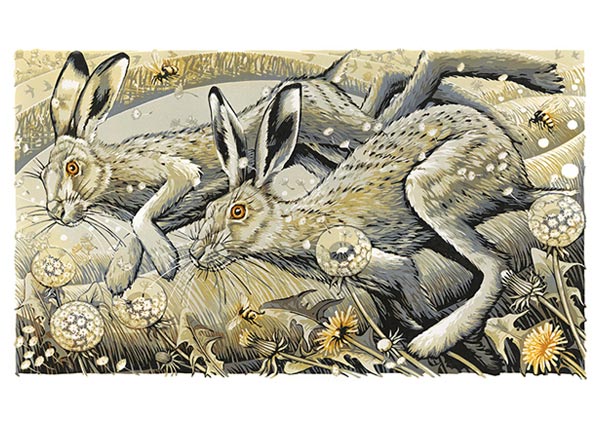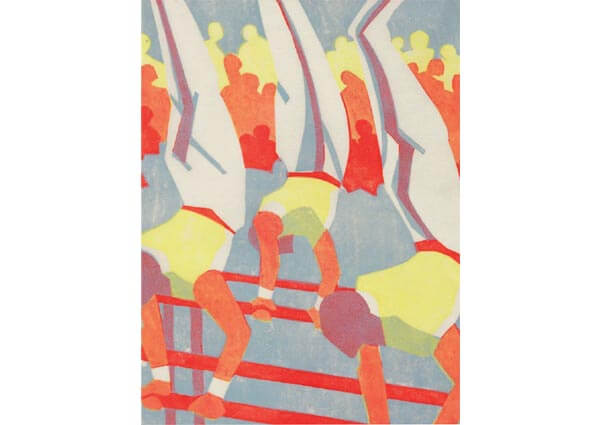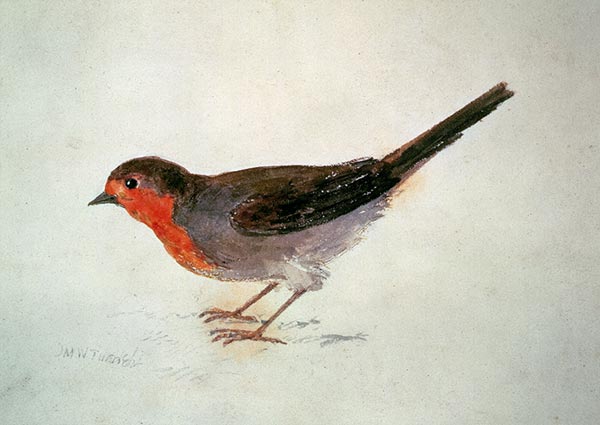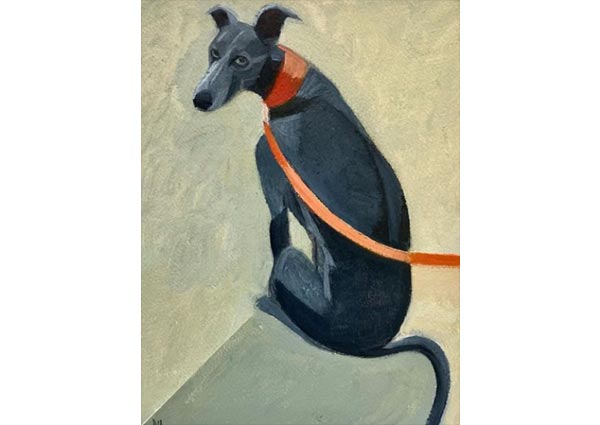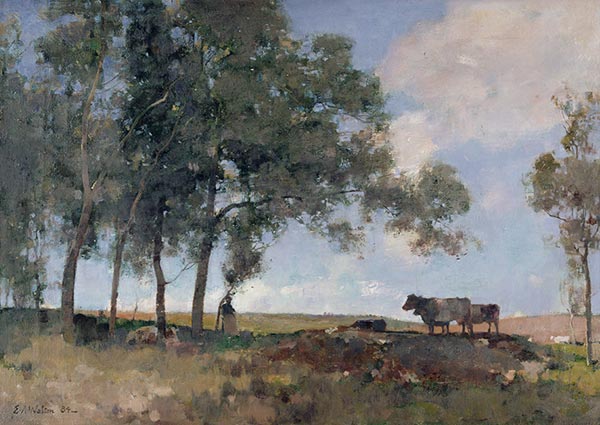Artists
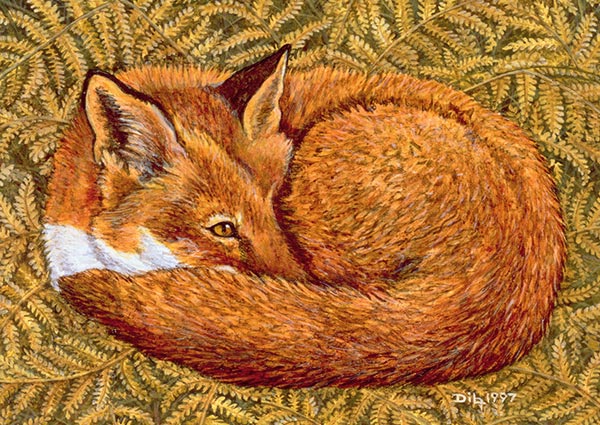
Ditz
Austrian artist Ditz paints house pets and farm animals, often in domestic settings or grouped together. Her distinctive style has evolved over time to include highly detailed, quirky, small-scale images.
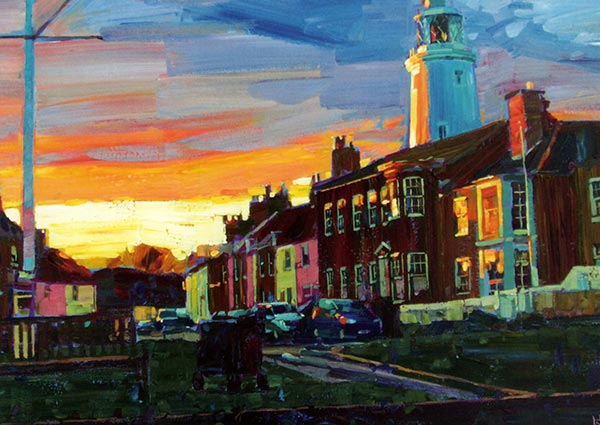
Hashim Akib
As far back as he can remember Hashim always painted, encouraged as a child by parents who nurtured creative thinking. Having left art college, Hashim pounded the streets of London with his portfolio, he found an illustration agency to represent his work and started producing artwork for magazines, book publishers and design firms. Hashim won various awards for his paintings and exhibited at London's Mall Galleries, with the Royal Institute of Oil Painters, and the Society of Marine Artists. His approach to painting has changed over the years from extremely detailed work to a much bolder, freer, impressionistic style. His first book on acrylic painting, published by Search Press, entitled 'Vibrant Acrylics' was published in 2012. He is represented by various galleries nationally.

John Aldridge
John Aldridge was a British painter, draftsman, wallpaper designer, and art teacher. After attending Uppingham School in Rutland, Aldridge studied at Oxford University and graduated in 1928. After finishing university, Aldridge settled in London, taught himself to paint and first exhibited his work in 1931. In 1933, he presented his first one man-show at the Leicester Galleries in London and in 1934 he exhibited at the Venice Biennale. In 1933, at age 28, Aldridge moved to Great Bardfield in the Essex countryside. He quickly became a friend of his neighbour, Edward Bawden. In 1941, Aldridge joined the British Intelligence Corps. After leaving the army in 1945, Aldridge returned to landscape painting of the Essex countryside as well as scenes from his many visits to Italy and Mallorca. In 1949, Aldridge began teaching at the Slade School for Fine Arts of University College London. The early 1960s saw the Bardfield art community fragment but Aldridge would remain for the rest of his life. In 1980, on Aldridge's 75th birthday, London's New Grafton Gallery held a retrospective on his work.
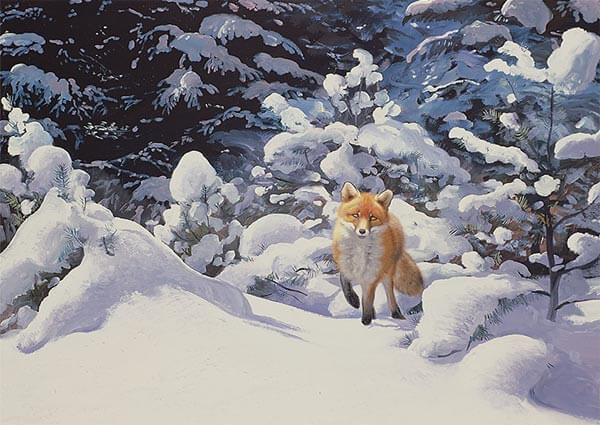
Douglas Anderson
Douglas Anderson was born in 1934, and having shown a keen interest in the paintbrush at the age of 3, he sold his first painting to a London gallery at 12 years old. In 1955 Douglas moved to Italy and studied portraiture with Pietro Annigoni in Florence. At the age of 27 he became the youngest member of The Royal Society of Portrait Painters. He has travelled extensively painting portraits around the world. In 1979 he held his first exhibition of wildlife paintings at The Tryon Gallery, London, followed by numerous exhibitions at Oscar & Peter Johnson, Ackermann & Johnson London, as well as exhibitions in Edinburgh, Stockholm, Gothenburg, Florence, Munich and Dublin. He continues to paint portraits and wildlife in alternate years, and his works are held in collections worldwide.
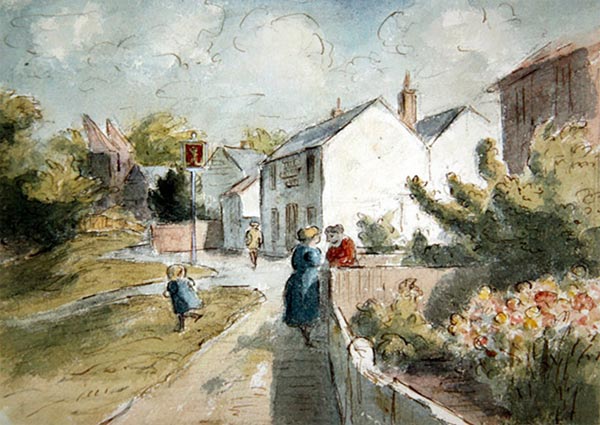
Edward Ardizzone
Edward Ardizzone was a British painter, printmaker and war artist, and the author and illustrator of books, many of them for children. After leaving school Ardizzone spent several years working as an office clerk in London, where he took evening classes at the Westminster School of Art. Then he gave up his office job to concentrate on establishing himself as a professional, freelance artist. In 1936 Little Tim and the Brave Sea Captain was published. This was the first in the Tim series that were written and illustrated by Ardizzone. During the Second World War, after a short spell serving in an anti-aircraft unit, Ardizzone was posted overseas as a full-time official war artist. After the War, Ardizzone resumed his freelance career. He continued writing and illustrating The Tim books is until 1972 with Tim’s Last Voyage. During his life Ardizzone held a number of teaching posts, working as an instructor in graphic design at Camberwell School of Art and as a visiting tutor at the Royal College of Art. In 1960 he retired from his teaching posts and began spending more time in Kent before moving there permanently in 1972.
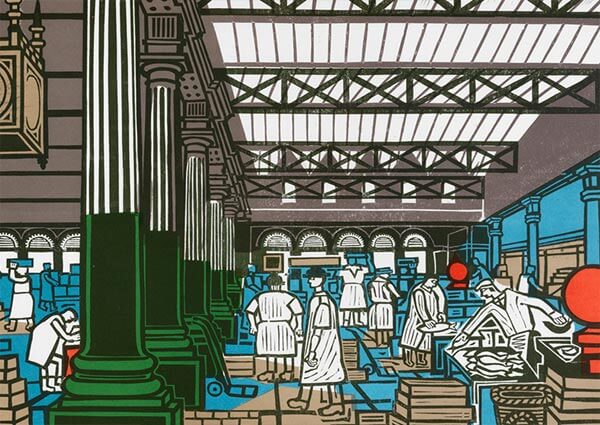
Edward Bawden
Edward Bawden was a successful and prolific English printmaker, graphic designer, illustrator and painter. He studied at the School of Art in Cambridge (1919-22) and at the Design School of the Royal College of Art (1922-6), where he was a contemporary of Eric Ravilious and was taught by Paul Nash.
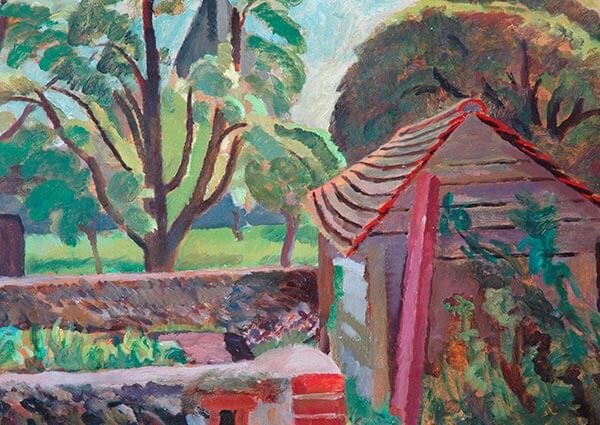
Vanessa Bell
Vanessa Bell was an English painter, member of the Bloomsbury Group and the sister of Virginia Woolf. In 1904, Vanessa and her siblings moved to Bloomsbury, where they met and began socialising with the artists, writers and intellectuals who would become known as the Bloomsbury Group. In 1907, she married fellow Bloomsbury member Clive Bell. Vanessa, Clive, the painter Duncan Grant and the writer David Garnett moved to the Sussex countryside shortly before the outbreak of the First World War, and settled at Charleston Farmhouse near Firle. In 1912, alongside Picasso and Matisse, Bell exhibited her work in the Second Post-Impressionist Exhibition at the Grafton Galleries, London.
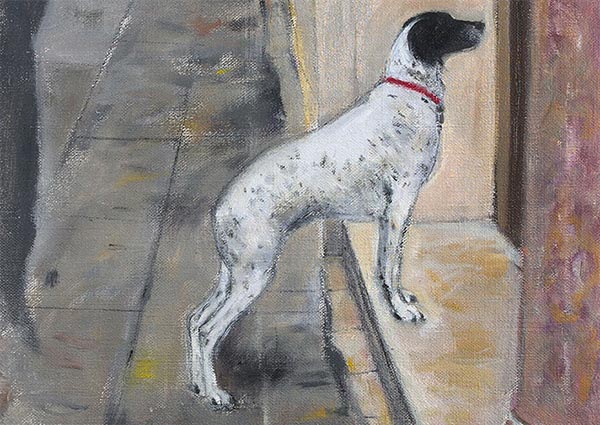
Dame Elizabeth Blackadder
Dame Elizabeth Blackadder is a Scottish painter and printmaker. She is the first woman to be elected to both the Royal Scottish Academy and the Royal Academy. She studied at Edinburgh College of Art and then in 1962 began teaching there and continued until her retirement in 1986. Blackadder works in a variety of media such as oil paints, watercolour, drawing and printmaking. She paints portraits and landscapes but her later work contains mainly flowers and her cats. Regular trips abroad, particularly to Japan, helped stimulate her interest in colour and pattern. Her work can be seen at the Tate Gallery, the Scottish National Gallery of Modern Art, and the Museum of Modern Art in New York, and has appeared on a series of Royal Mail stamps.
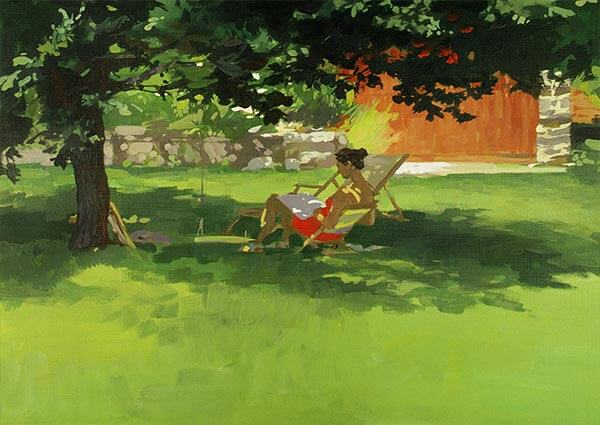
Daniel Cacouault
Daniel Cacouault is an illustrator, painter, concept artist, and artistic director. Daniel lives between Nantes and Paris. He has worked in the fields of comics, illustration, cartoons, cinema and video games for more than thirty years. A disciple of illustrator Neil Ross, he is a regular collaborator of director Pete Candeland (Gorillaz, Beatles Rock Band), and has worked as a concept artist for Dreamworks, Disney, and recently for the Netflix series Love, Death and Robots.
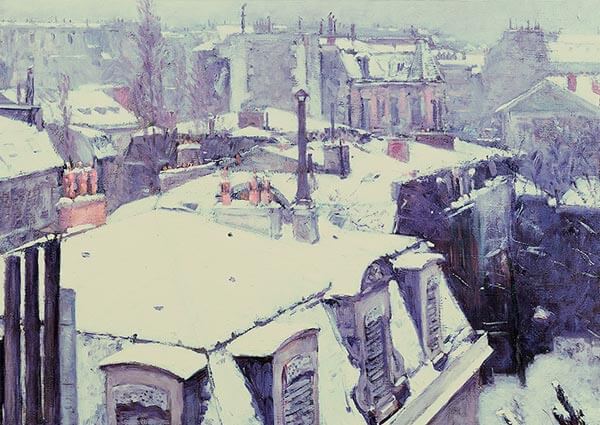
Gustave Caillebotte
Gustave Caillebotte was a French painter who was a member of the Impressionist group of artists. In 1870 Caillebotte was drafted to fight in the Franco-Prussian war. After the war, Caillebotte enrolled at the École des Beaux-Arts. Shortly after he met and befriended Edgar Degas, and attended (but did not participate in) the first Impressionist exhibition. Caillebotte made his debut in the second Impressionist exhibition in 1876, showing eight paintings, including Les raboteurs de parquet (The Floor Scrapers) (1875), his earliest masterpiece. In 1881, Caillebotte acquired a property at Petit-Gennevilliers, on the banks of the Seine near Argenteuil, and he moved there permanently in 1888. He ceased showing his work at age 34 and devoted himself to gardening and to building and racing yachts. Auguste Renoir often came to stay. Caillebotte was a model for Renoir's 1881 painting, Luncheon of the Boating Party.
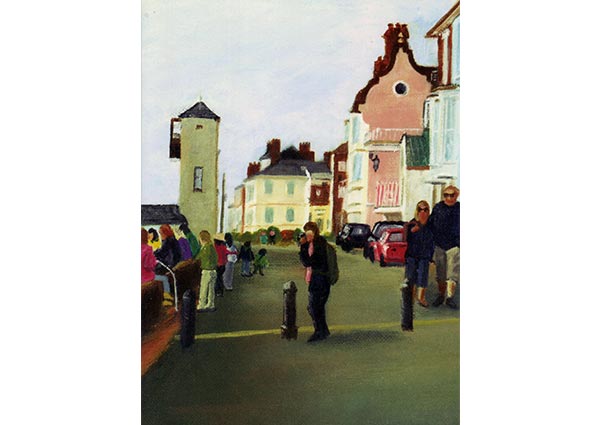
James Cairns
James Cairns was born in the East End of London in 1933. He completed his National Service in the RAF from 1952 to 1957 working as ground crew in Oakington on Meteor and Vampire aircraft. Following his retirement James now finds the time to concentrate on his love of Painting, a passion since his early school years. With an eye for colour, light, and shade his style reflects Suffolk life in a unique way. He now lives on the Essex coast and keenly supports local art groups.
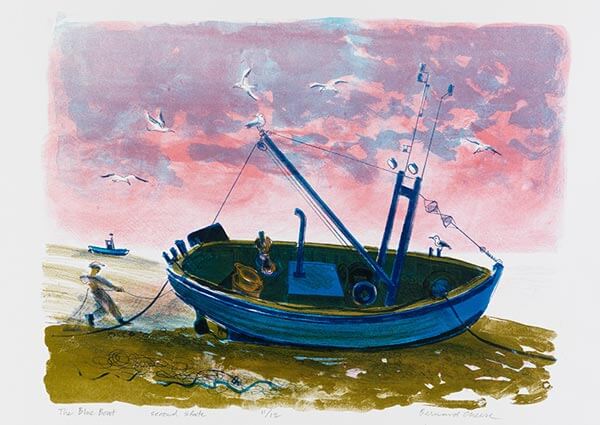
Bernard Cheese
Bernard Cheese studied at Beckenham School of Art and, following four years in the army, studied in London at the Royal College of Art from 1947, where his teachers included Edward Bawden. He taught printmaking at St Martin’s School of Art from 1950 to 1968, then at Goldsmiths College from 1970 to 1978, and Central School of Art and Design (1980–89). He designed posters for London Transport. He also did commissions for Guinness and the BBC. In the 1950s he moved to the artists’ community of Great Bardfield in Essex. His works are in the collections of the Tate, the Victoria and Albert Museum, the British Royal Collection, the British Government Art Collection, the New York Museum of Modern Art, and the New York Public Library.
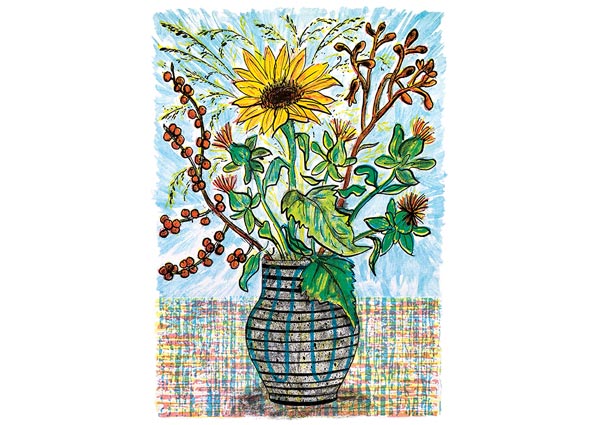
Rachel Clark
Rachel Clark works as a freelance book designer and artist/printmaker. After an Art Foundation course at Brighton College of Technology, she studied Illustration and Printmaking at Edinburgh College of Art. She is a Sussex based artist who loves to draw and travel. Prints emerge from her location drawings and images take on a new life as she experiments using printmaking techniques including screen-printing, etching and lino-cutting.
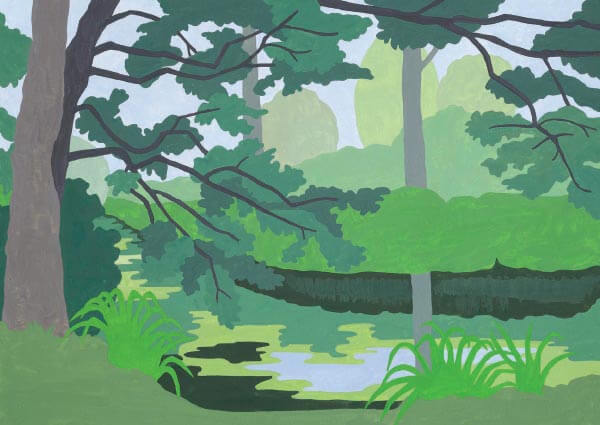
Sonia Coode-Adams MBE
Sonia Coode-Adams studied at the Byam Shaw School of Art and has worked as an artist off and on ever since. She has exhibited in numerous mixed exhibitions and had a one-woman exhibition with Baskett and Day in 1983. She also exhibited in “Pandora’s Box”, a touring exhibition in 1984.Her own garden at Feeringbury Manor provided the inspiration for a series of 20 paintings that chronicles her exploration of the garden during the imposed COVID-19 lockdown, charting the garden’s transition from
spring to summer 2020. A return to painting after a hiatus of many years, lockdown enabled a discovery of a new painterly language to translate the blossoms, the shapes, the colours of the garden to reveal a joy of colour for colour’s sake. The series of paintings was shown in the exhibition ‘Lockdown Garden’ at Firstsite in Colchester in the summer of 2020.
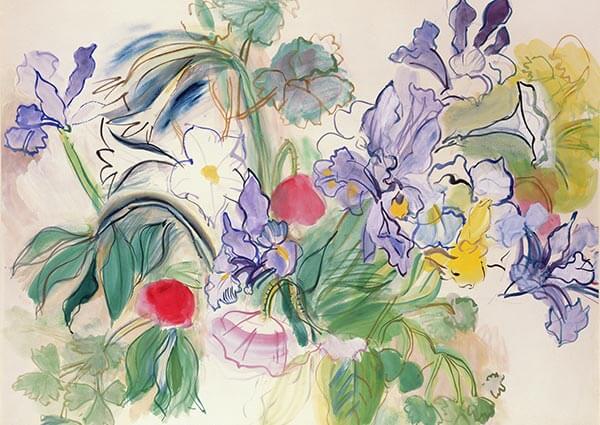
Raoul Dufy
Raoul Dufy was a French Fauvist painter best known for scences of open-air social events. He was also a draftsman, printmaker, book illustrator, scenic designer, and a designer of furniture.
In 1900 he attended the École des Beaux-Arts in Paris. His early work was influenced by the impressionists. However, in 1905 he began to use the broader brushstrokes and bright colours associated with the Fauves. In the early 1920’s Dufy painted scenes of recreation including horse races, regattas, parades, and concerts. He spent much of his time on the French Riviera and produced a series of paintings of Nice. Dufy’s colorful, decorative style became fashionable for ceramic and textile design.
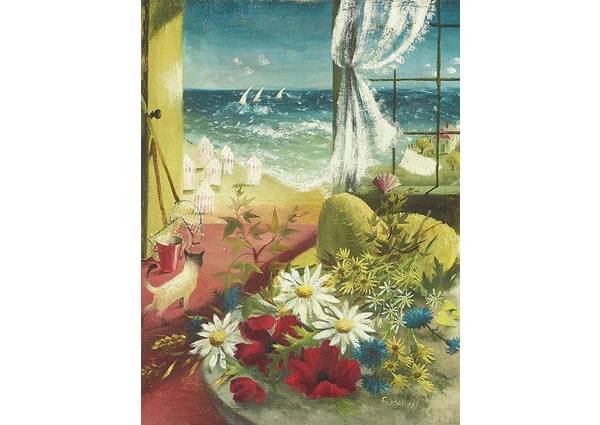
Mary Fedden
Mary Fedden was born in Bristol and wanted to be a painter even as a child. She left Badminton School at sixteen and then studied at the Slade School of Art in London under the theatre designer Vladimir Polunin. After serving abroad as a driver in the final years of the Second World War she resumed her career as a painter. In 1949 she moved to Durham Wharf, a complex of studios on the Thames at Chiswick. Two years later she married the artist Julian Trevelyan. Together they travelled in Europe, Africa, India, Russia and America. Since 1946 Fedden has painted prolifically, taught at the Royal College of Art and has had regular exhibitions at the Redfern Gallery, the New Grafton Gallery and many other galleries throughout Britain. A number of her paintings hang in the Tate.
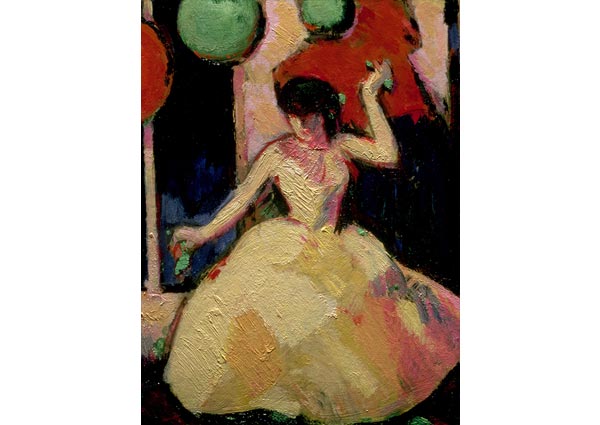
John Duncan Fergusson
John Duncan Fergusson was a Scottish artist and sculptor, regarded as one of the major artists of the Scottish Colourists school of painting. Fergusson was born and raised in Edinburgh. After leaving art school he travelled to Morocco, Spain and France. In Paris he met Matisse and Picasso. He also met and became friends with Samuel Peploe, another of the group of artists who would later become known as the Scottish Colourists. In the 1920s Fergusson was settled in a studio in London. His first solo exhibition was in 1923 and he was also involved in several important group exhibitions. In 1928 he and his partner, the dancer Margaret Morris, moved to Paris, where they lived until the spectre of war once again loomed over Europe, prompting the couple to move to Glasgow in 1939 where they were to remain for the rest of their lives.
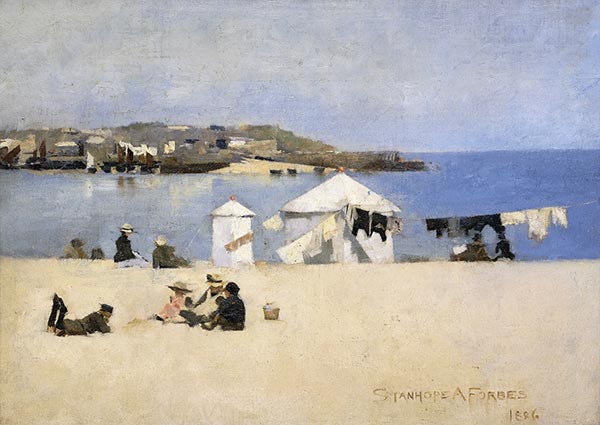
Stanhope Alexander Forbes
Stanhope Alexander Forbes was a British painter and a founding member of the influential Newlyn school of painters. He was often called 'the father of the Newlyn School'. Between 1874 and 1878 Forbes attended the Royal Academy. He moved to Paris in 1880 to complete his training. Whilst in France he adopted plein-air painting. Having completed his studies in France, Forbes returned to London and showed works he made in Brittany at the 1883 Royal Academy and Royal Hibernian Academy shows. In 1884 he moved to Newlyn in Cornwall, and soon became a leading figure in the growing colony of artists. He remained in Newlyn for the rest of his life.
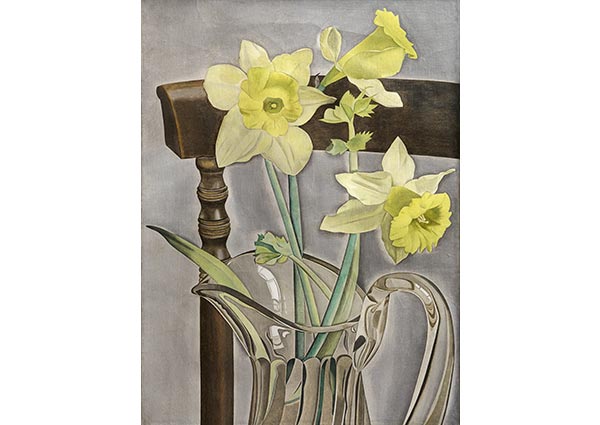
Lucian Freud
Lucian Freud was was born in Berlin, the grandson of the revolutionary psychologist Sigmund Freud. His family moved to England in 1933, when he was 10 years old, to escape the rise of Nazism. He became a British naturalized citizen in 1939. From 1942 to 1943 he attended Goldsmiths' College, London. He served at sea with the British Merchant Navy during the Second World War. His early career as a painter was influenced by surrealism, but by the early 1950s his paintings tended towards realism. Freud paintings, completed over a 60-year career, are mostly of friends and family. They are generally sombre often set in unsettling interiors and urban landscapes. Freud worked from life studies, and was known for asking for extended and punishing sittings from his models.
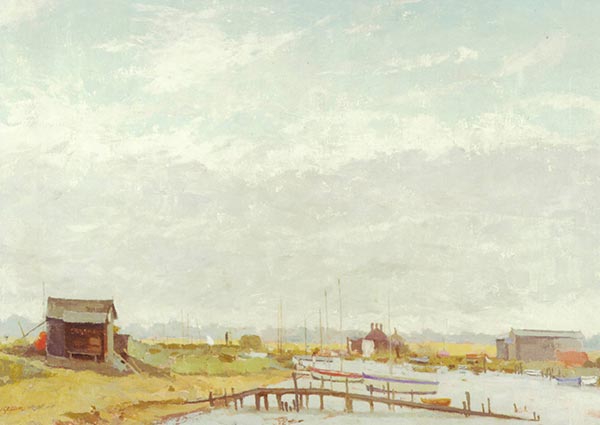
Margaret Green
Margaret Green was born in West Hartlepool, County Durham, the daughter of a stock-taker in a steel plant, who also ran the local art club. Her parents always encouraged her to paint. On holiday in a popular sketching area of Yorkshire, the 16-year-old Margaret was drawn by Patrick Heron, who happened to be staying next door. This encounter with a celebrated young painter confirmed her own artistic calling. From Hartlepool Art School, she won a scholarship to the Royal College of Art at its wartime home in the Lake District. There she fell in love with the painter Lionel Bulmer. It was during this period that the two students first visited Walberswick. They came in a spirit of homage to paint in the footsteps of the English impressionist Philip Wilson Steer, who had visited Southwold and Walberswick during the 1880s. Years later they moved to Suffolk after finding a dilapidated mediaeval hall house near Stowmarket. They restored the ruin themselves, adding a light-filled studio. From here they made frequent excursions to paint in Walberswick and Southwold, exhibiting in New English Art Club shows and the Royal Academy summer exhibition. When Lionel died in 1992, Margaret was bereft and never painted another picture until her own death eleven years later.
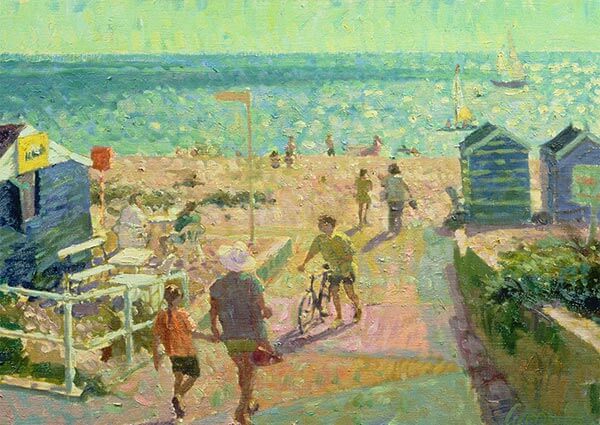
Hugo Grenville
Renowned British Contemporary Painter Hugo Grenville first exhibited in London at the Chelsea Arts Society at the age of 15. With 20 one-man shows under his belt at major galleries in London, New York and Palm Beach, Hugo has forged an enviable reputation as one of the country’s leading colourist painters. Grenville’s fluid brush strokes marry colour and pattern in a style not unlike that of Henri Matisse. A feeling of intimacy in his work connects him to Les Nabis, Pierre Bonnard and Edouard Vuillard. His paintings are an unashamed and joyous celebration of life, steeped in the English Romantic tradition.
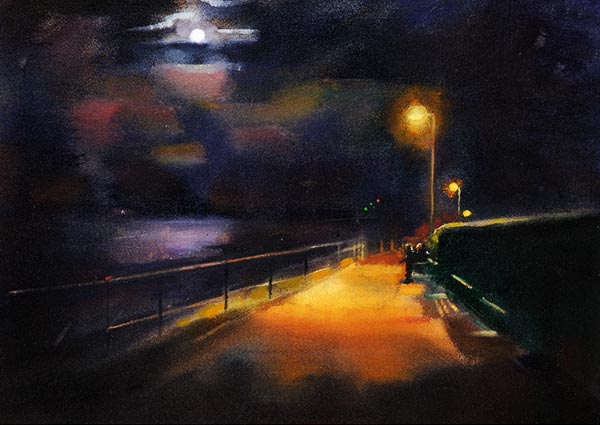
Katherine Hamilton
Katherine Hamilton, once a professional dancer, is now a full time artist who lives close to Southwold, the town which she has so often celebrated in her art. After having her interest in dance aroused when she was a pupil at Dartington Hall School, she gradually became more interested in painting. In 1971, aged 17,sshe went to Florence to study for a year with Nerina Simi. Simi was a teacher of Annigoni, famous for his rigorously classical portrait of Queen Elizabeth Il. 'It was another way of looking,' she recalls, 'but when I left it was necessary to throw off her technique, otherwise it imprisoned you.' After an unstructured year at the Byam Shaw School of Art in London, she was drawn back to the stricter discipline and immediacy of dance and she worked for some six years as a dancer and choreographer, moving between Amsterdam, New York and Ethiopia. After this she returned to painting. She moved to Suffolk in 1992, but has continued to travel as far afield as Guatemala and Kerala to paint everything from beach football matches to bull fights. More recently she has found inspiration nearer home at Yarmouth's Hippodrome Circus. Among her many admirers is PD. James, who has written of her skill at capturing movement, tension and mood through colour and form and of how the truthfulness of her vision 'draws us so powerfully to her art'.
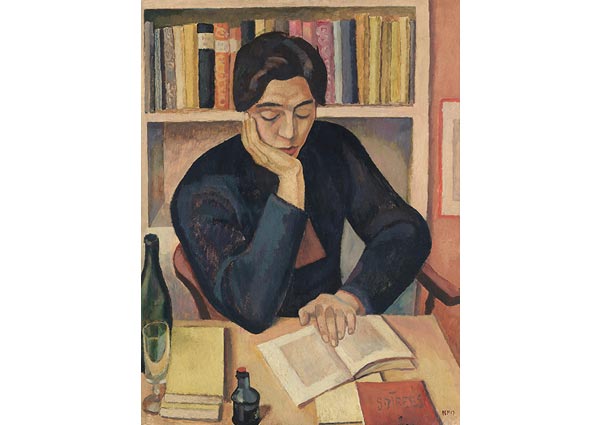
Nina Hamnett
Nina Hamnett was a British painter, designer, and illustrator. She was born in Tenby, Wales. Nina studied at various art schools in Dublin, London, and finally Paris, where she met several leading avant-garde artists, including Modigliani. From 1913 to 1919 Hamnett worked for Roger Fry's Omega Workshops; Fry painted several portraits of her. In the 1920s, she spent much of her time in Paris. However, she often returned to London for exhibitions of her work, which included portraits, landscapes, interiors, and figure compositions.

Madeleine Hand
Madeleine Hand graduated from Glasgow School of Art in 1981 where she specialised in illustration. She loves the paintings of the 1940's and has been inspired by the work of Eric Ravilious and Evelyn Dunbar. Over the last few years, she has helped set up a Community Growing project in Dunkeld, where volunteers grow and harvest vegetables, flowers and herbs for the village markets. The subjects of fields, farming, contemplation and celebration often feature in her paintings.
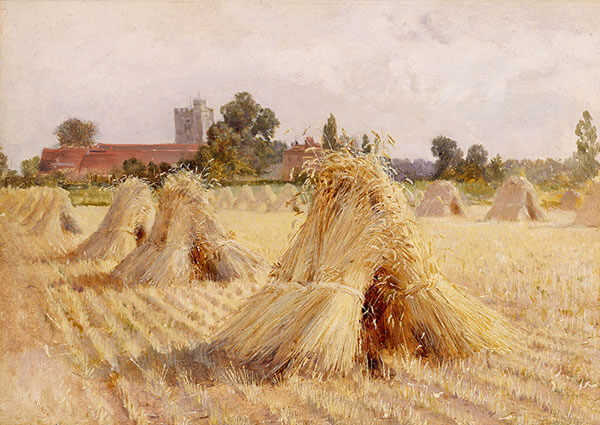
Heywood Hardy
Heywood Hardy was a British painter. Born in Chichester, Sussex. He studied at the École des Beaux-Arts in Paris. Upon returning to England, Hardy’s work became popular and he received many commissions from the estates of his wealthy patrons. He went on to become a member of The Royal Society of Painters and Etchers, The Royal Institute of Oil Painters, and The Royal Society of Portrait Painters. He also worked as an illustrator for several publications, including The Illustrated London News and The Graphic Magazine. In the last years of his life, Hardy made a controversial shift from sensitive animal subjects to biblical scenes of Christ walking in the Sussex countryside. Today, his works are in the collections of the Philadelphia Museum of Art, the Manchester City Art Gallery, and the Bury Art Museum, among others.
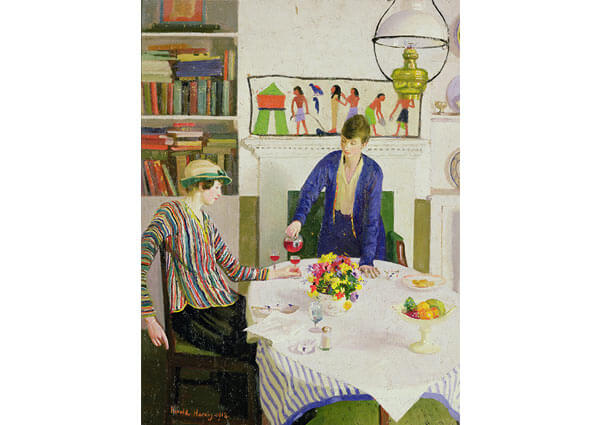
Harold Harvey
Harold Harvey was a Newlyn School painter who painted scenes of Cornish fishermen, farmers and miners and Cornish landscapes. He was born in Penzance and trained at the Penzance School of Arts and the Académie Julian in Paris. After completing his schooling in Paris, Harvey returned to Penzance and began working as an artist. In 1911, Harvey married fellow artist Gertrude Bodinnar and they settled in Newlyn. Gertrude became an artist in her own right in a wide range of visual and textile arts. Harvey never achieved his due critical acclaim. However, he was a regular exhibitor at the Royal Academy from 1898-1941 and held several one-man exhibitions in London, at the Mendoza Galleries, Barbizon House and the Leicester Galleries.
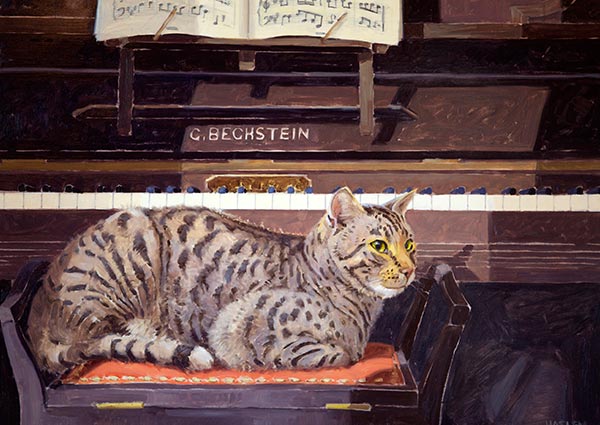
Andrew Haslen
Andrew Haslen was born in Essex in 1953. He is a painter and printmaker of animal subjects. He was elected a member of The Society of Wildlife Artists in 1988 the same year he opened The Wildlife Art Gallery in Lavenham. In 2010 a book on his work was published titled The Winter Hare. During his career Andrew has won several awards, these include; Winner of the Royal Society for Nature Conservation 'Natural World' Art Award in 1992 and 1997, and Runner- up in 1993. He was also the winner of the Royal Society for the Protection of Birds Art Award in 1996 and 1999.
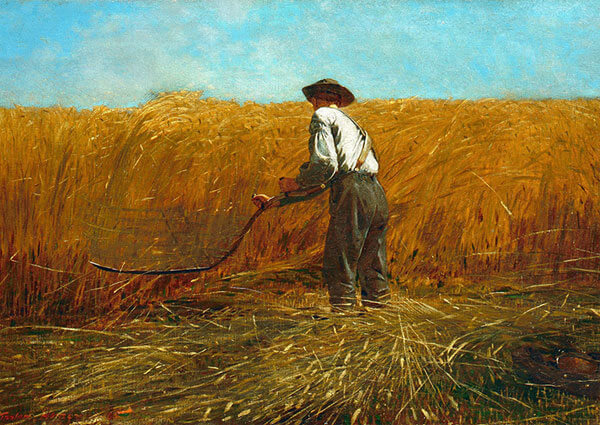
Winslow Homer
Winslow Homer was an American landscape painter best known for his marine subjects. Homer grew up in Cambridge, Massachusetts. Largely self-taught, he became a working commercial illustrator in New York. During the Civil War he was sent to the front in Virginia as an artist correspondent for Harper’s Weekly. Homer’s earliest Civil War paintings, are anecdotal. However, As the war drew to a close and after the war Homer’s subjects became the lives of Americans in the wake of the war and works such as The Veteran in a New Field reflect a more profound understanding of the war’s impact and meaning.
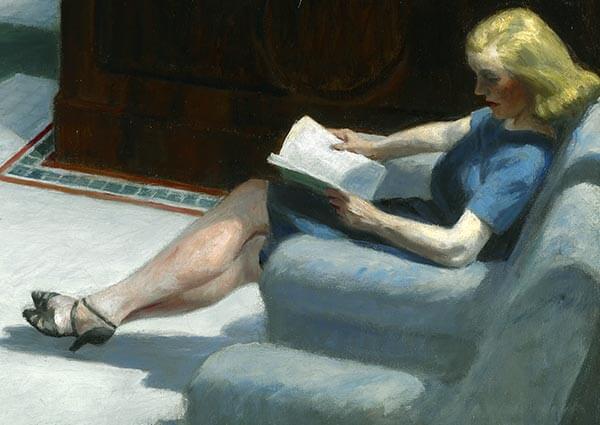
Edward Hopper
Edward Hopper was born in Nyack, New York. After leaving high school he studied at the New York School of Art. In 1906 he visited Paris and became influenced by the impressionists. In 1910 Hopper returned to New York and in the following years painted some of his most recognisable paintings. In 1923 he married Josephine. Although they lived in New York they spent much of their time and most of their summers in Massachusetts where he painted the architecture and the landscapes in and
around Cape Cod.
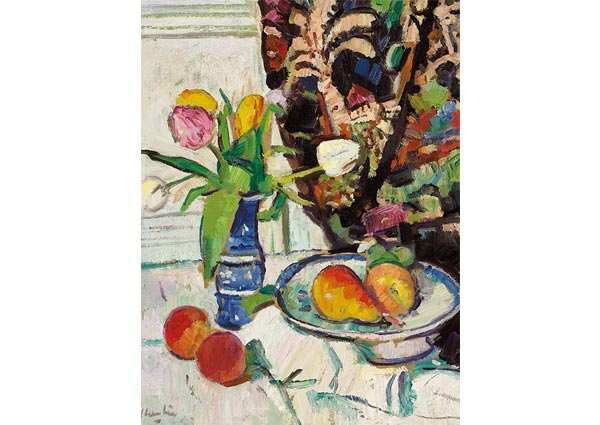
George Leslie Hunter
George Leslie Hunter was born in Rothesay on the Isle of Bute. His family emigrated to California in 1892 and by the turn of the century he was working as an illustrator. Little is known of Hunter’s early work as much of it was destroyed in the San Francisco earthquake of 1906. He moved to Glasgow soon afterwards. During the 1920s Hunter emerged alongside Cadell, Fergusson and Peploe as one of a group of artists who became known as ‘Scottish Colourists’. They were all influenced, in varying degrees, by the bright colour and loose brushwork of French Impressionism, Post-Impressionism and fauve painting.
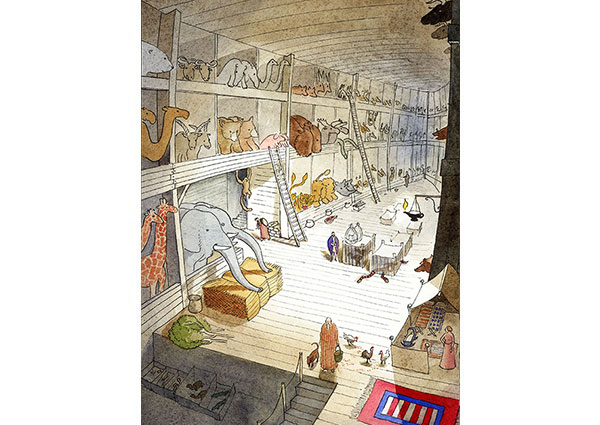
Warwick Hutton
Warwick (Wocky) Hutton was born in London in 1939, one of twins, to recently immigrated New Zealander parents. His father was glass engraver and muralist John Hutton, his mother artist Helen Hutton. He studied at the Colchester School of Art where he was taught by John Nash. He worked with his father engraving the Great West Window at Coventry Cathedral, painted portraits for the Churchills and ran the foundation and illustration courses at the Cambridge College of Arts and Technology. He is most widely known for elegant pen and ink and watercolor illustrations for children's books. His subjects were folk, Biblical and mythological stories which Hutton retold, such as Noah and the Great Flood, The Nose Tree, and Theseus and the Minotaur. He also worked with texts by Hans Christian Andersen (The Tinderbox) and with retellings of traditional stories by author Susan Cooper (The Silver Cow, The Selkie Girl, Tam Lin).
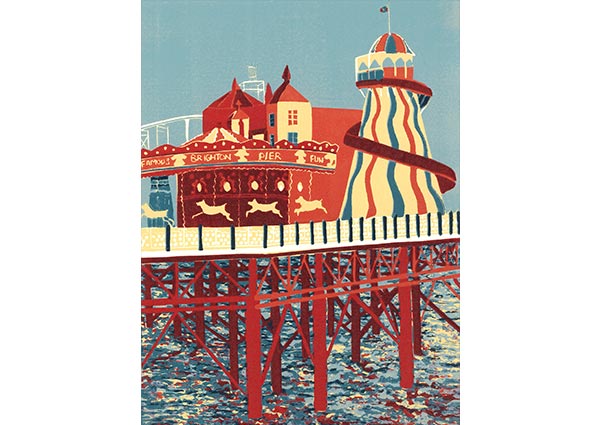
Jennie Ing
Jenny's work mainly features the urban environment and the places she knows best. It is an interest in architecture and a fascination with the way space is taken up in our cities that inspires Jenny's work, as well as the patterns, repetition and colours found in the built environment. Some of this interest occasionally spills over to lead to work of other subject matter. Jenny works in relief print, a hand process involving cutting away areas from the surface of a flat block of Iino, inking the remaining area and printing from this on to paper.
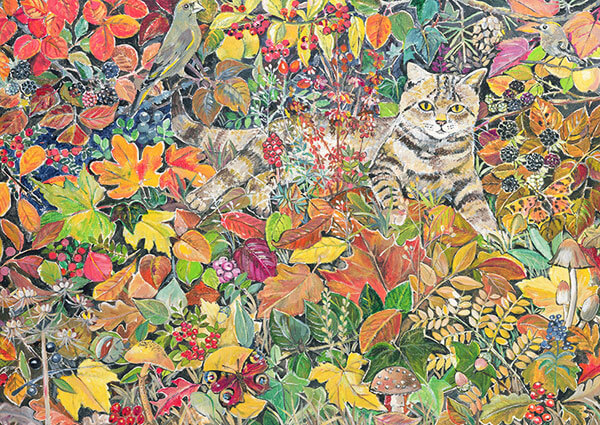
Hilary Jones
Hilary Jones, born 1939, is a self taught artist who began painting in mid-life after a journalistic career as a fashion writer and women’s page editor. She works mainly in acrylics and papier mache. Hilary lives in North London with her husband and two ‘rescued’ cats.
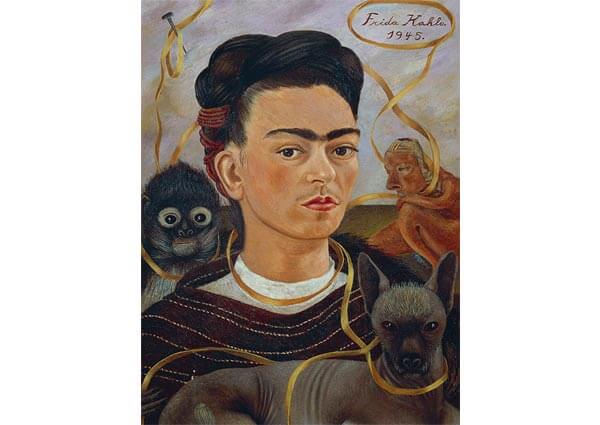
Frida Kahlo
Frida Kahlo was a Mexican painter known for her portraits, self-portraits, and
works inspired by the nature of Mexico. Kahlo had been a promising student
headed for medical school until she suffered a bus accident at the age of 18,
which caused her lifelong pain and medical problems. During her recovery, she
returned to her childhood interest in art. In 1927 Kahlo met fellow Mexican
artist Diego Rivera. The couple married in 1929, and spent the late 1920s and
early 1930s travelling in Mexico and the United States together. During this
time, she developed her artistic style. In 1938 the artist André Breton arranged
for Kahlo’s first solo exhibition at the Julien Levy Gallery in New York in 1938;
the exhibition was a success, and was followed by another in Paris in 1939.
From the exhibition The Louvre purchased a painting from Kahlo, The Frame,
making her the first Mexican artist to be featured in their collection. Kahlo’s
work as an artist remained relatively unknown until the late 1970s, when her
work was rediscovered by art historians and political activists.
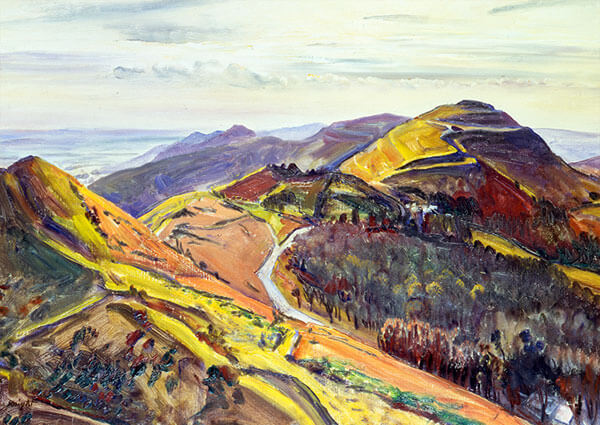
Laura Knight
Dame Laura knight was an English landscape and figurative painter. Laura studied at Nottingham School of Art in 1900, where she met Harold Knight. After marrying in 1903, they joined an artists' colony at Staithes, Yorkshire, before moving in 1908 to Newlyn, Cornwall. In 1936 she became only the second woman elected to full membership of the Royal Academy. Her large retrospective exhibition at the Royal Academy in 1965 was the first for a woman. In her long career, Knight was among the most successful and popular painters in Britain. Her success in the male-dominated British art establishment paved the way for greater status and recognition for women artists. She was also greatly interested in, and inspired by, marginalised communities and individuals, including Romani people and circus performers.

Peder Severin Krøyer
Peder Severin Krøyer was a Danish artist best known for the landscape and figurative paintings he produced at the summer beach resort of Skagen, Denmark. At the age of 14 Krøyer was already taking painting classes in the Danish Art Academy. In 1877 he travelled to France, Spain and Italy to study art. In 1882 he returned to Denmark and visited Skagen for the first time. Krøyer fell in love with the place and joined the local group of artists. Krøyer divided his time between rented houses in Skagen during the summer and during the winters lived in an apartment in Copenhagen where he worked on his large commissioned portraits.
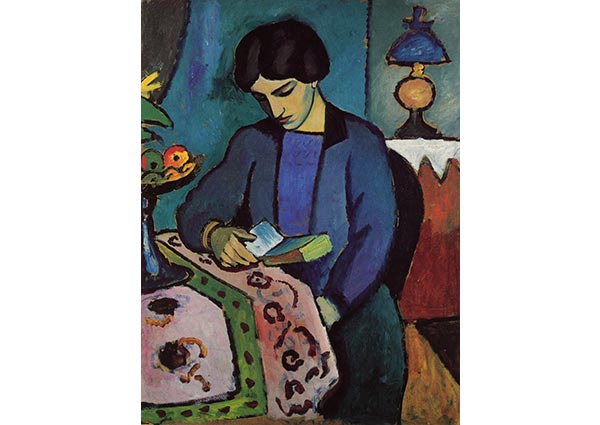
August Macke
August Macke was a German Expressionist painter and one of the leading members of the group Der Blaue Reiter (The Blue Rider). Macke studied at the Düsseldorf Academy from 1904 to 1906. During his first trip to Paris in 1907 he was profoundly influenced by the work of the Impressionist painters. In 1909 Macke again visted Paris and on this
trip discovered the work of Henri Matisse and the other Fauve artists. This convinced Macke to use brighter, less-naturalistic colours, applied in broad brushstrokes. In 1911 Macke joined Der Blaue Reiter, which had been founded by Franz Marc and Wassily Kandinsky. In 1912 Macke met the French painter Robert Delaunay, who worked in a colourful Cubistinfluenced style. Subsequently, Macke introduced a Cubist style into his own paintings.
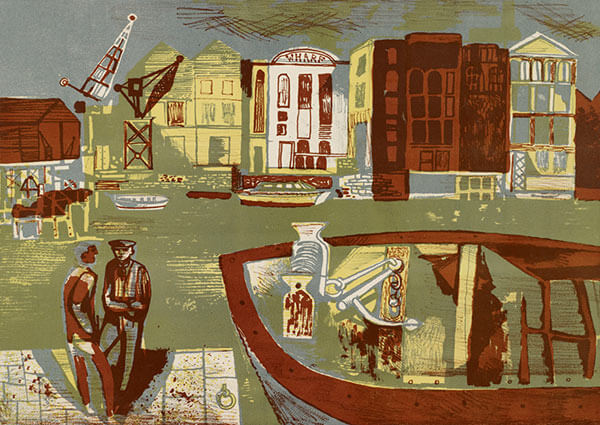
John Minton
John Minton was an English painter, illustrator, stage designer, and teacher. Minton was born in Cambridgeshire. He studied art at St John's Wood School of Art from 1935 to 1938. He then spent eight months studying in France and returned from Paris when the Second World War began. After studying in France, he became a teacher in London at the Camberwell College of Arts, and from 1946 to 1948 he was in charge of drawing and illustration at the Central School of Art and Design. At the same time he maintained a considerable output of works. Between 1945 and 1956 he had seven solo exhibitions at the Lefevre Gallery. In addition to landscapes, portraits and other paintings, some of them on an unusually large scale, he built up a reputation as an illustrator of books, designer of textiles and wallpapers and he also produced posters for London Transport and Ealing Studios.
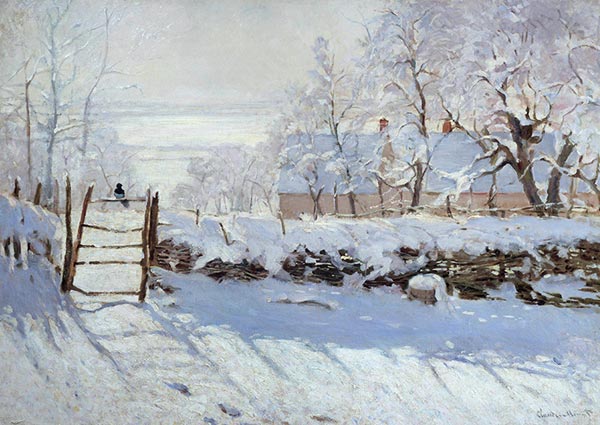
Claude Monet
Claude Monet was a French painter and founder of impressionist painting. Monet studied at the Académie Suisse where he was a classmate of Auguste Renoir. He exhibited in most of the Impressionist exhibitions, beginning in 1874, where the title of one of his paintings led to the naming of the movement. In 1883 he acquired a property at Giverny, north-west of Paris. Thereafter Monet concentrated on the production of the famous series showing a single subject in different lighting conditions, including poplars, haystacks, Rouen Cathedral, and his own garden at Giverny. Frequently exhibited and successful during his lifetime, Monet's fame and popularity soared in the second half of the 20th century when he became one of the world's most famous painters.
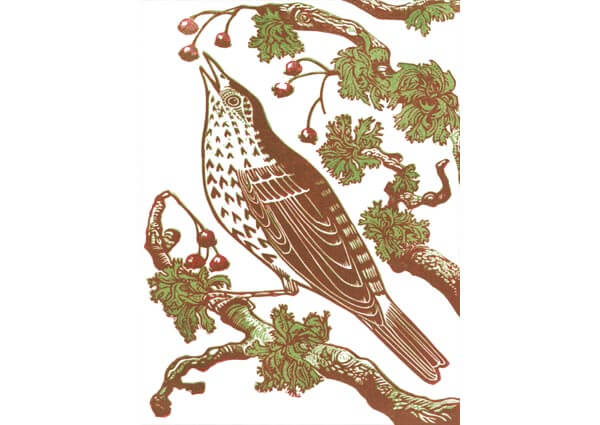
Cat Moore
Cat Moore is a self-taught printmaker, based in the hills of rural Northumberland. Her work is inspired by small moments within each day, as well as the big skies and rolling hills of her home county, the drama of the Cumbrian fells, and the light which spills so perfectly on the islands and West Coast of Scotland. Cat is endlessly exploring the potential of light, shapes, storytelling and mark making in her practice, with image making part of an ongoing discussion about sense of place, space and time, and the challenge of capturing the immediacy of a moment within the confines of the graphic medium of linocut.
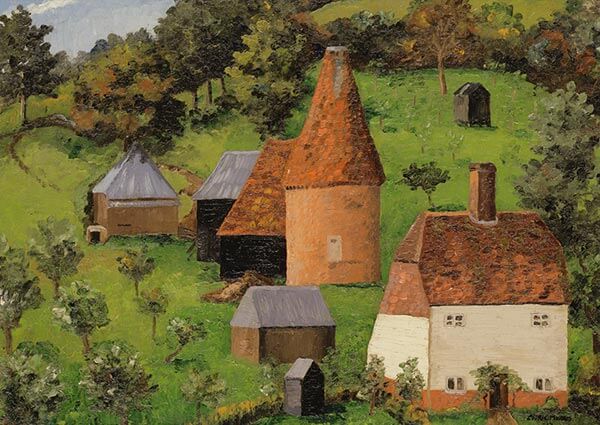
Cedric Morris
Cedric Morris was a British artist, art teacher and plantsman. He was born in Swansea in South Wales, but worked mainly in East Anglia. Cedric grew up in Sketty, South Wales. On leaving school he spent his younger years intermittently abroad, regularly travelling across Europe and North Africa, whilst renting studios in
Cornwall, Paris and London. In the 1930s, Cedric and his partner, the artist Arthur Lett-Haines made Suffolk their permanent base, moving to Pound Farm in Higham where his garden became much admired. Morris developed a post-Impressionist style for portraits, landscapes and highly decorative style for still-life.

Alberto Morrocco
Alberto Morrocco was a Scottish artist and teacher. He painted landscapes of Scotland and abroad, still-lifes, figurative paintings, and interiors, but perhaps his best-known works are his beach scenes and views of Venice. Alberto was born
in Aberdeen to Italian parents. He attended Gray’s School of Art from the age of
fourteen and won scholarships enabling him to paint and study in France, Italy
and Switzerland. After serving in the army between 1940-46 he devoted his time
to painting. His subject matter varied from the domestic interior, landscape, still life and commissioned portraits. Combining his talent with abundant energy he was remarkably productive throughout his life and produced some of his most vigorous work later in life in the period from 1982 to his death. Even late in his life and seriously ill, he would commit himself to exhibitions of thirty or forty new works in a year.
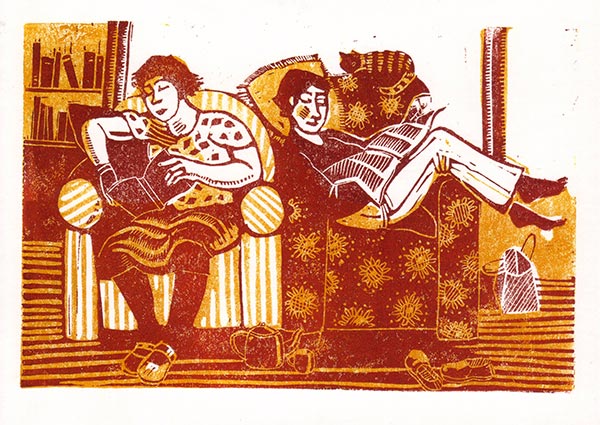
Elaine Nason
Elaine Nason was born in Walton on the Naze, Essex and studied at Colchester School of Art from 1955 to 1959. In 1961 Elaine attended Trent Park Teacher Training College and went on to teach in primary schools in London and Suffolk from 1963 to 1999 with special responsibility for art. Elaine painted and exhibited throughout her teaching career. Elaine is a figurative painter, working in oils and watercolour. Her subject matter is chiefly concerned with the human figure, still life and the domestic scene and in this she attempts to convey her interest in the everyday and commonplace. Composition, pattern and space are important considerations in her work. Linocuts, monoprints, drawings and etchings follow the same themes. Elaine has exhibited widely in East Anglia and is a member of the Suffolk Group and Artworks.
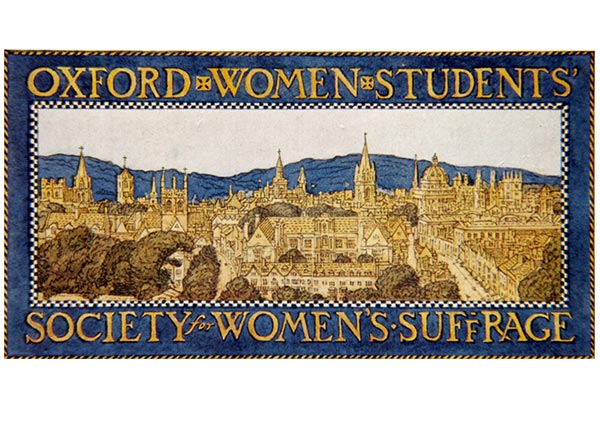
E. H. New
New was born in Evesham Worcestershire. He studied at the Birmingham Municipal School of Art. He became known in the 1890s as an illustrator in the black-and-white style of the Arts and Crafts movement. He speciahsed in pen and ink drawings of rural and urban landscapes, old buildings and their interiors, architectural features, and also designed bookplates. In 1895, New was invited to meet William Morris at Kelmscott Manor, and went on to provide design work for the Kelmscott Press as well as illustrating Morris's two-volume biography by J. W. Mackail. Between 1896 and 1914, New provided hundreds of illustrations for over 50 books for various publishers. He also taught drawing to T E Lawrence ('Lawrence of Arabia'). In 1905, New moved from Evesham, the place of his birth, to Oxford where he started work on a series of drawings of the University of Oxford colleges, a project which was to occupy him for the rest of his life and remained unfinished.
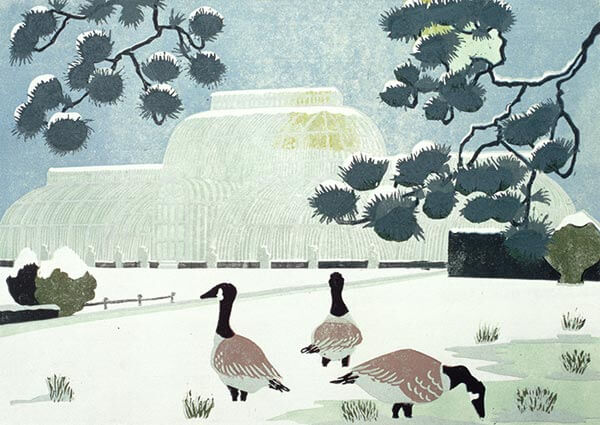
Angela Newberry
Angela Newberry is an artist printmaker and graduate of the Royal College of Art. She established her printmaking studio in 1984 and now shares her time between studios in the UK and in Australia. Her imagery is inspired by the Australian landscape and she works in linocuts, reliefprints and screenprints. More recently she has designed a collection of exclusive designer rugs.
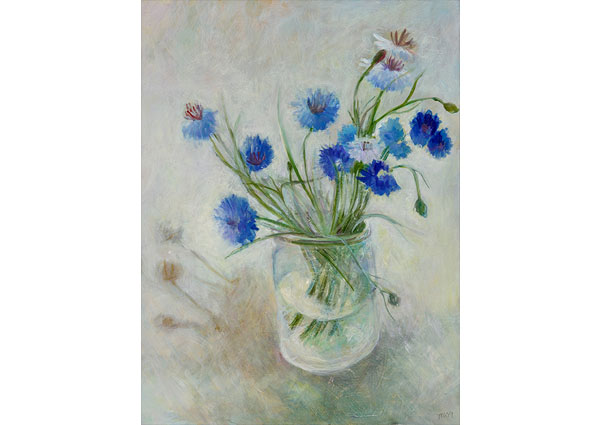
Tessa Newcomb
Tessa Newcomb is a landscape and still-life painter. After leaving school she studied at Norwich School of Art from 1972-1973, and gained an honours degree from Bath Academy of Art in 1976, In 1977 she attended a course on printmaking at the Wimbledon School of Art. The Suffolk countryside and country events feature predominantly in Newcomb’s paintings. Her work features working figures, dogs, boats, churchyards and allotments all portrayed in her distinctive style.Newcomb’s first solo exhibition was held at the Annexe Gallery, Wimbledon in 1979. Her work was included in mixed exhibitions at Crane Kalman Gallery between 1995 and 1997, followed by two one-woman shows in 2002 and 2004. She has works in public collections including the Bradford Metropolitan Museum and the Whitworth Art Gallery.
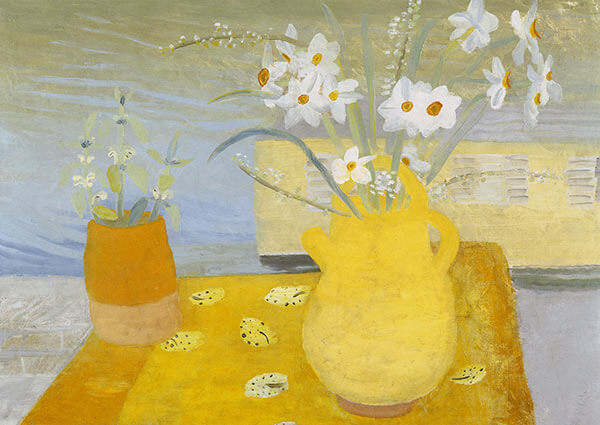
Winifred Nicholson
Winifred Nicholson painted prolifically throughout her long life, usually flowers in a pot or vase on a windowsill with a view behind, and also some portraits and abstracts, but always with an interest in light and colour. Based in Cumbria she travelled extensively painting in France, Ireland, the Hebrides and Greece. Winifred Nicholson’s works are held in many UK Museums, notably the Tate and Kettle’s Yard, Cambridge.
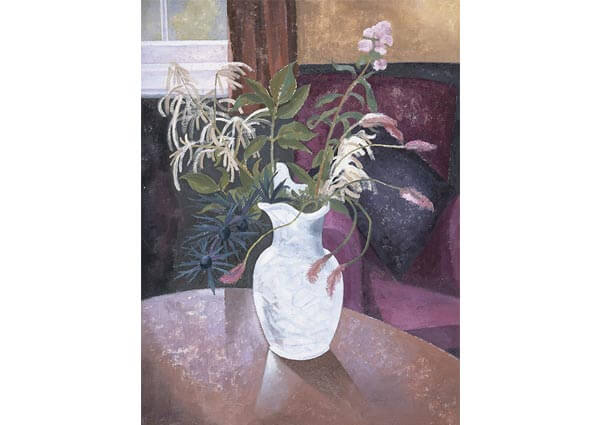
John Northcote Nash
John Northcote Nash was the younger brother of surrealist landscape artist Paul Nash.
Nash never received any formal art training. However, his elder brother Paul, who had studied at the Slade School of Art, encouraged him to develop his skills. A joint exhibition with Paul in 1913 was successful, and John was invited to become a founder-member of the London Group in 1914. From 1916 to 1918, Nash volunteered with the Artists Rifles in the First World War. At his brother’s recommendation, he became an official war artist. After the war He became a teacher, taking a position at the Ruskin School of Drawing and Fine Art in Oxford from 1924 to 1929. In 1929, he bought a summer cottage in Essex, where he would turn his efforts to painting picturesque East Anglian landscapes.
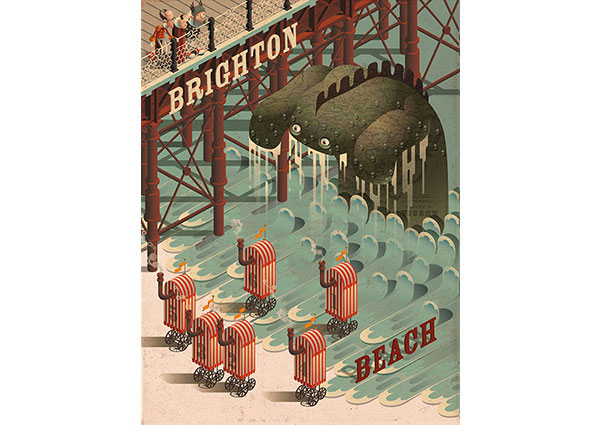
Mark Oliver
Mark is a well established, professional Illustrator. He has illustrated for Advertising, Editorial, Design and Publishing. His list of picture books include: 'Foley and Jem', 'Robot Dog', 'Tom's Clockwork Dragon', and 'Monsters'. Mark has won various awards during his career including; Gold for the TfL/SAA 'Open Spaces' poster award. He was Runner Up in the 2003 Avensis prize for his book 'Get in Gear'. Mark was also shortlisted for the 2011 Stockport Children's Book Award.
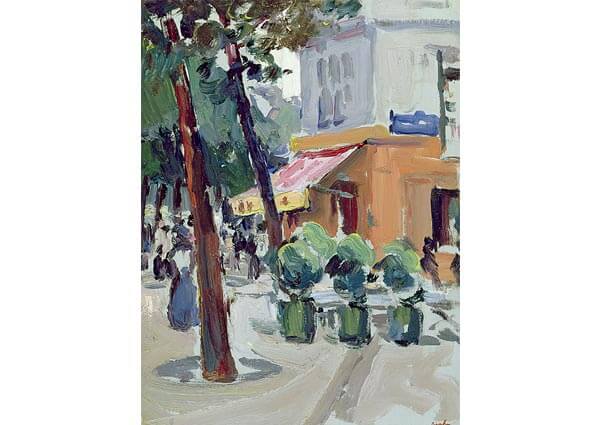
Samuel John Peploe
Samuel John Peploe was a Scottish Post-Impressionist painter, noted for his still life works. During his life he lived mostly in Edinburgh, however, he frequently visited France. He studied at the Académie Julian, and lived in Paris between 1910 and 1913. During this time in Paris he moved from an Impressionist style to one influenced by Cézanne and the Fauves. He was a member of the group known as the Scottish Colourists along with John Duncan Fergusson, Francis Cadell and Leslie Hunter.
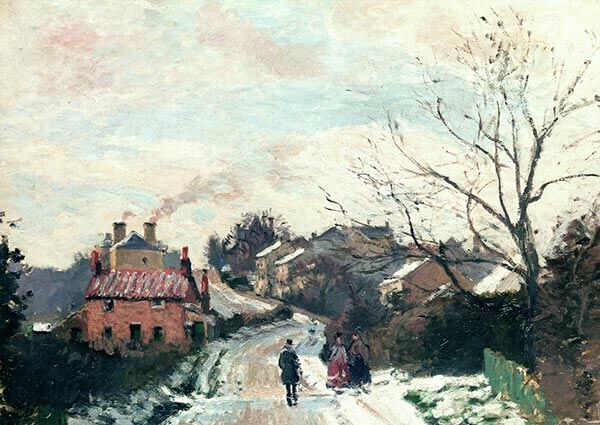
Camille Pissarro
Camille Pissarro was born on the island of St. Thomas in the Danish West Indies (present-day US Virgin Islands). At the age of 12 he was sent to school in France. Returning to St. Thomas at 17, he attempted to join his father’s business while also continuing to draw and paint. However, he returned to Paris in 1855, and enrolled in the studio of Jean-Baptiste-Camille Corot, and later attended the Académie Suisse where he befriended Paul Cézanne. During the Franco-Prussian War he fled to London, where he met Claude Monet and was influenced by the works of John Constable and J. M. W. Turner he saw in museums. Upon returning to France, Pissarro helped organize the first show dedicated to Impressionist works, marking a pivotal moment in European art. Today, his works are held in the collections of the National Gallery in London, the Musée d’Orsay in Paris, and the Metropolitan Museum of Art in New York, among others.
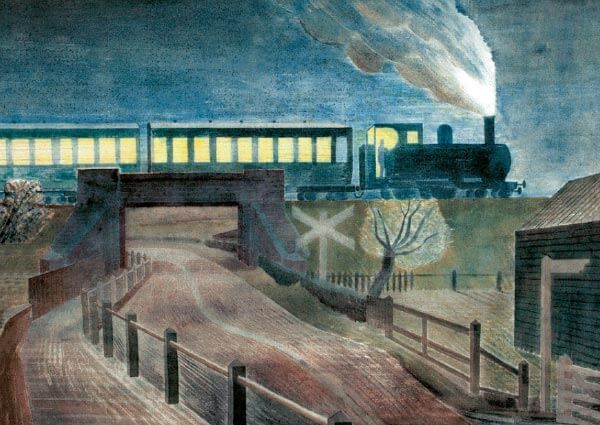
Eric Ravilious
Eric Ravilious was an artist, illustrator and designer specialising in watercolour paintings of the British countryside, most famously of Sussex. Ravilious had a special connection to the area, as he grew up there and studied at the Eastbourne School of Art. He went on to study at the Royal College of Art and later became one of the most popular artists of the 1930s.

Tirzah Ravilious
Tirzah was born in Gillingham, Kent. After finishing school she attended the Eastbourne School of Art from 1925-1928. It was here that she met Eric Ravilious. In 1928 she moved to London and studied at the Central School of Art. Tirzah was a skilled wood engraver; She was commissioned to produce woodcuts for Kynoch Press and the BBC. Tirzah and Eric married in 1930. In 1931 they left London and moved to rural Essex where they started a family. She gave up her art to raise their children and to support Eric with his career. Thankfully Tirzah’s work is now starting to get the recognition it deserves.
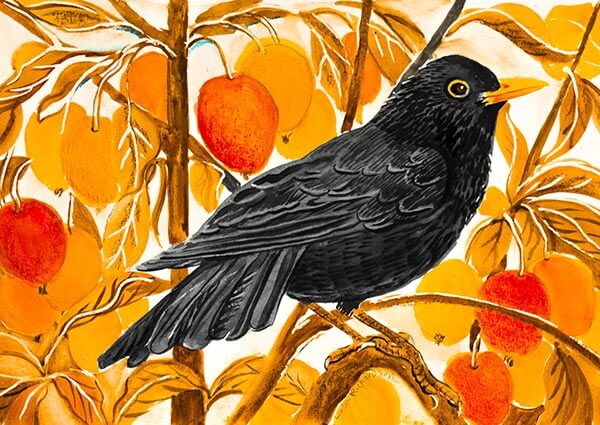
Linda Richardson
Linda Richardson is an Essex born artist-printmaker who has now made her home on the beautiful Shetland Islands. After a 2 year foundation course, Linda studied printmaking at the Colchester School of Art, 1976-1979. She still has close ties with East Anglia but now finds inspiration from the wildlife and varied landscape that Shetland provides. Her printmaking encompasses both linocuts and etching. As a painter she works in acrylic, watercolour or mixed media.
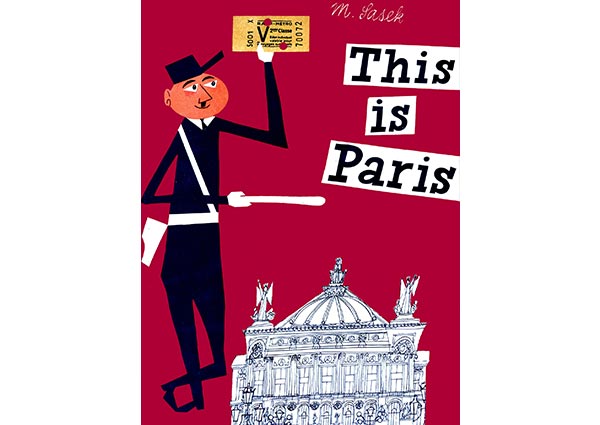
Miroslav Sasek
Miroslav Sasek, was born in Prague in 1916. He had just begun a career in children's literature when the Czechoslovak coup d'etat of 1948 prompted him to emigrate to Munich, West Germany, where he worked for Radio Free Europe from 1951 to 1957. Starting with This is Paris published in 1958, Miroslav Sasek wrote and illustrated a series of eighteen books. This Is London received the New York Times Choice of Best Illustrated Children's Book of the Year in 1959, as did This Is New York in 1960. This Is New York also received the Boy's Club of America Junior Books Award in 1961, while This Is the United Nations appeared on the International Board on Books for Young People Honour List in 1979.

Arabella Shand
Arabella Shand studied at Colchester Institute, Kingston Polytechnic, and City and Guilds of London Art School. She has lived and painted in East Anglia for 20 years. Her work focuses mainly on flowers, family life and domestic interiors. Arabella's major influences are Picasso, Ben Nicholson, Mary Fedden, and John Nash.
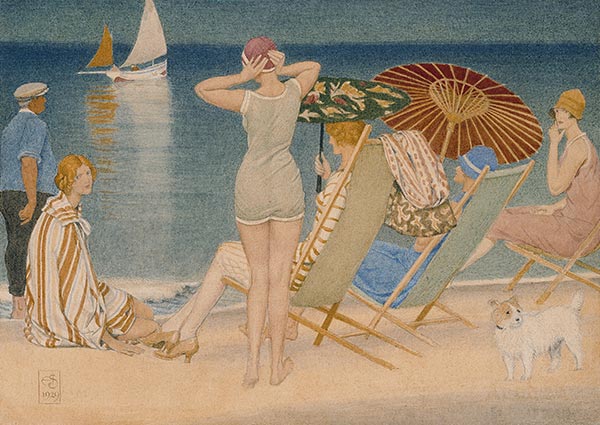
Joseph Southall
Joseph Southall was born in Nottingham in 1861. His father, a grocer, died a little over a year later, and the young Southall and his mother moved to Edgbaston, Birmingham to live with his mother's family. After an education in York, Southall returned to Birmingham in 1878 and trained with the leading local architects' practice Martin & Chamberlain, while studying painting part- time at the Birmingham School of Art. Southall became frustrated by his architectural training, feeling that an architect should have a broader understanding of craft disciplines such as painting and carving. With this in mind he undertook several tours in Europe. The following year he left Martin & Chamberlain. Southall painted a variety of subjects during his career, including mythological, romantic, and religious subjects, portraits and landscapes. He was known for his mastery of the colour red, the clean and clear light in his works, and for his paintings on the theme of Beauty and the Beast.
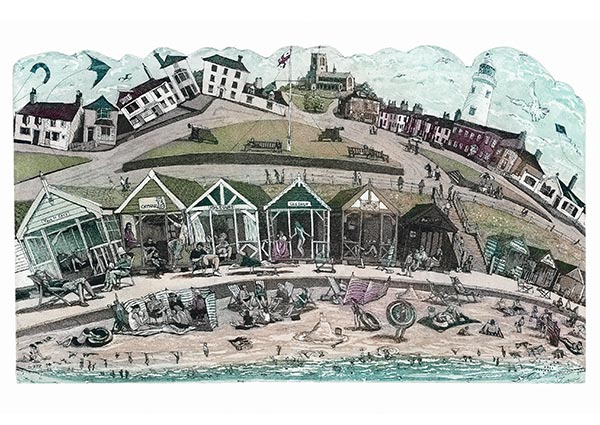
Glynn Thomas
Glynn Thomas was born in Cambridge in 1946. He studied at the Cambridge School of Art and then, for some twelve years, taught printmaking at the Ipswich School of Art. He is now a full time artist living in Suffolk. Glynn is a Fellow of the Royal Society of Painter-Printmakers and his work has been exhibited in galleries and museums throughout the country. Perhaps the most striking feature of his style is his impatient eagerness to embrace every feature of his subject even if this means defying visual convention. As Nicholas Butler has written, 'The perspective is cockeyed, note a few of the buildings are lying on their sides in their eagerness to be included, but there, in a single, friendly print, is the essence of the place.'
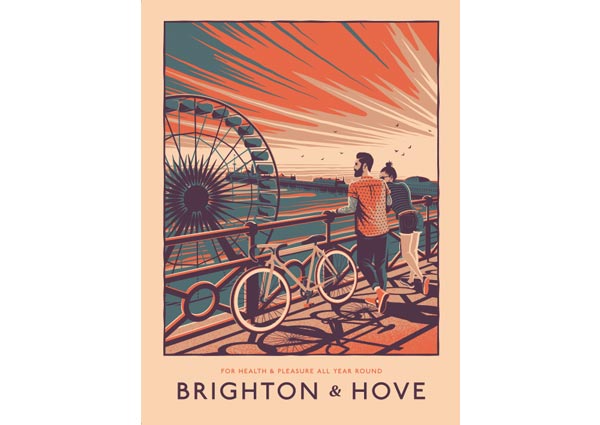
Thomas Walker
Thomas Walker is a book cover and movie poster designer and illustrator based in Brighton, UK. Having worked as a professional, award-winning product design consultant for over a decade, he has recently switched from 3D to 2D. Now he is utilising all the skills he developed from the world of branded product styling into this exciting new dimension, relishing the opportunity to design for the films, music, literature and games that have inspired him.
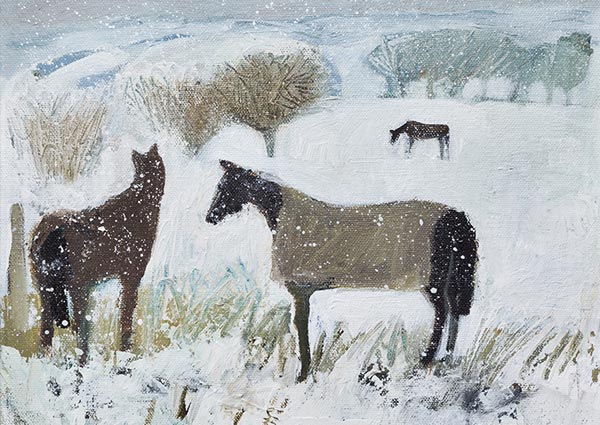
Louise Waugh
Louise Waugh is a painter and printmaker. Louise began exhibiting at 20. Her first exhibition was at the then Bristol Arts Centre where she exhibited large woodcuts and linocuts. Louise exhibited both in the UK and abroad over the following years. She now works in a rural studio in West Somerset painting primarily in oil and acrylic. Her practice is to draw and sketch on location as well as painting, and then returning to the studio to bring another dreaming element from her imagination to the work. Her work has been exhibited throughout the UK and also in America, Spain, Italy and Ireland as well as showing regularly in the R.A. Summer Exhibition.
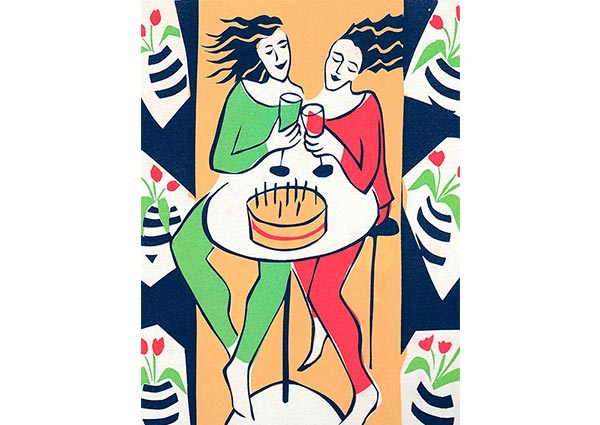
Moira Wills
Moira Wills is a Brighton based printmaker specialising in hand printed screenprints. The work is lively, colourful and full of joie-de-vivre. Dancing figures cavort across domestic landscapes and sleeping lovers are oblivious to jealousies and intrigues. Soft painterly effects contrast with sharp handcut line work creating tensions and depth to the images. Moira graduated with a BA hons in Fine Art at Camberwell School of Art and is a part time lecturer at Reigate School of Art in Redhill.

